Service history "Svetlana"
28 September 1913 cruiser was enrolled in the lists of vessels of the Guards crew. 11 November 1913 was laid at the Russian-Baltic Shipbuilding and Mechanical JSC in Reval. 28 November 1915. Launched. In October, 1917 was towed by the Tarmo icebreaker in Petrograd. Since November, 1924 was completed at the Baltic Shipyard. 5 February 1925 “Svetlana” was renamed “Profintern” (Profintern - Red International Trade Union - an international organization of revolutionary trade unions. It was established at the 3-19.11.1921 international congress of revolutionary trade unions and industrial unions held in Moscow. By the end of 1937, Profintern stopped its activity). 26 April 1927 The ship was presented for testing.
1 July 1928. The cruiser Profintern joined the Baltic Marine Force (RBCME).
6-12 August 1928. The cruiser participated in the campaign of ships of the ISMM under the flag of the Chairman of the USSR RVS KE Voroshilov to the south-western part of the Baltic Sea. (In addition to the Profintern campaign, the 3 battleship, 9 destroyers, 9 submarines, and 3 vehicles participated in the campaign).
In August, the 1929 "Profintern" together with the cruiser "Aurora" and four destroyers participated in the overseas campaign. 16 August he left Kronstadt and the next day at sea connected with the cruiser "Aurora", released from Kronstadt earlier. On August 18, the cruisers under the overall command of the head of the training detachment of the VMUZ ships Yu.F. Rally arrived at the Swinemünde raid. The destroyers headed for Pillau and Memel. The leaders of the hike on the plane went to Berlin. On August 21 the cruisers left Swinemünde and the 23s returned to Kronstadt. 6-12 September 1929. “Profintern” participated in the autumn maneuvers of the SMBM.
In November, the cruiser “Profintern” (commander A.A. Kuznetsov) was included in the 1929 cruiser, which included the battleship “Paris Commune”. The commander of the detachment was appointed L.M. Galler - head of the brigade of battleships MSBM. The battleship and cruiser were supposed to go from the Baltic to the Black Sea.
November 22 16.30 squad out of Kronstadt. Late in the evening of November 24, he anchored in the Bay of Kiel. Having received fuel from the transports, the 26 ships in November continued their march. Having passed Belt, Kategat, having rounded the metro station Skagen, the detachment entered the North Sea. Here the first troubles began: the mechanics did not take into account the differences in the salinity of the water of the Baltic and the ocean and boilers boiled on ships. On the evening of November 27, the detachment anchored. In the morning of November 28, the ships were removed from the anchor, but at noon they again had to anchor as the thickened mist closed the lighthouses.
Having passed the English Channel, the 30 ships of November at the Barfleur Lighthouse met with the transports that had gone ahead. The average speed at the Kronstadt-Kiel bay transition was 14 knots, and the Kiel bay — m. Burfler — 10,9 knots. The ocean wave swayed ships and transports, which greatly complicated bunkering. In order not to bruise the sides and not tear the hoses, the ships were constantly working on machines, and when the wind strengthened, loading was stopped. This operation lasted two days.
Bay of Biscay met ships cruel storm. When the detachment was going up against the wind, the Profintern, who had a high forecastle, easily climbed the wave. But unfortunately the general course forced the ships to go lag to the wave. Cruiser roll reached 40 °. It did not help and decrease the course. By the evening of December 3 riveted hull seams dispersed from the blows of giant waves on the Profintern. In the 6-e boiler room water began to flow, at the same time the sump pump failed (the drain valve stem broke). The cruiser took up the 400 t of water. L.M. Galler was forced to make a decision to call at the nearest port. December 4, making a salute of nations, the ships entered the outer raid of Brest. The crew of the cruiser on its own began repair. And the storm grew stronger, even on the outer roads the wind reached 10 points. Standing on two anchors "Profintern" continuously worked turbines "small forward." Two days later, the repair was over. The French tugboats brought an oil barge to the board, but they could not fully fill the fuel supply - the hoses were torn during the excitement.
December 7 ships again went into the Bay of Biscay. The storm reached hurricane power - wind to 12 points, waves 10 meters in height and 100 in length. Cruiser roll reached 40 °. All the boats were broken. Especially heavy damage was received by the battleship, which was buried with its nose into the wave. His deck was hidden under the water on the first tower. When, under the blows of the waves on it, the nasal fixture collapsed, the squad leader decided to return to Brest.
December 10 ships again came to the raid of the French port. The battleship moved to the internal raid for repairs, the cruiser was anchored in the external roadstead. Local authorities did not allow the dismissal of teams ashore. Commanders could move to the city only with business visits. Two weeks later, the repair of the battleship was completed, but because of the incessant storm, the output was postponed. Only December 26 squad left Brest, this time finally. Having rounded m. San Vincent, the ships headed for Gibraltar.
Having met the coming 1930 year in the sea, the 1 squad of January came to Cagliari bay on Sardinia. There were already waiting for the transports with fuel and water. On January 6, permission was received to enter the harbor of the city of Cagliari and dismiss the crew ashore. For the first time in a month and a half, sailors could feel solid ground under their feet. The next day, a football match was organized between the city team and the Profintern team.
8-9 January ships moved from Cagliari to Naples. January 14 squad left Naples, and January 17 entered the Black Sea, where he was met by a division of destroyers UMBM. 18 January 1930 The cruiser and the battleship arrived in Sevastopol. For 57 days, ships passed 6269 miles.
“Profintern” was included in the MSCM (since 11 in January 1935, the Black Sea Fleet). 9 March 1930 of the “Profintern” together with the battleship “Paris Commune”, the cruisers “Chervona Ukraine” and the “Red Caucasus” (completed in Nikolaev) was included in the division (from 1932 - the brigade) of the cruisers MCMS.
The next decade, the cruiser mastered the new theater, the crew was engaged in combat training. 10-13 October 1931. The cruiser participated in maneuvers of the WMSM.
On the night of May 10, 1932, the Profintern followed the Chaud raid, where the gathering was held fleet. When maneuvering, he collided with the cruiser Red Caucasus, which hit the Profintern with a bow in the stern casemate of the starboard side. Damage repair took 12 days.
From 26 August to 6 September 1932 "Profintern" together with the cruiser "Chervo-on Ukraine", three destroyers and three gunboats made a trip to the Sea of Azov.
24 October 1933 “Profintern” with “Chervona Ukraine” left Sevastopol escorting the Turkish steamer “Izmir”, on which the Soviet government delegation headed by Commissar for Military and Naval Affairs KE Voroshilov went to Istanbul to celebrate the 10 anniversary Turkish Republic. On the morning of October 26, the ships arrived in Istanbul, and after 6 hours they returned and October 27 returned to Sevastopol. On November 9, the cruisers again went to Istanbul, on November 11 entered into guarding the Izmir steamer with the returning delegation and on November 12 arrived to Odessa.
In 1935-1938 Profintern underwent a major overhaul and modernization at Sevmorzavod.
22 June 1939. “Profintern”, like the whole crew of cruisers, was included in the squadron of the Black Sea Fleet. Back in 1937, the city of Profintern ceased operations, but only two years later the cruiser was renamed, having received the name "Red Crimea" by analogy with two brigade cruisers. From this point on, the Black Sea Fleet cruiser brigade can be called the “Red”.
The cruiser met the beginning of World War II under the command of the captain 2 of the rank of A.I. Zubkov. The ship was in the current repair at the plant number 201 (got up for repair in May 1941). 1 August 1941. The cruiser moved away from the factory wall. From 8 to 10, August was docked in the Northern Dock. August 12 cruiser inspected the squadron commander L.Vladimirsky. The 13 August cruiser, not yet released from repair, was included with two destroyers in the squadron No. XXUMX to reflect the possible landing of troops in the area of Odessa. August 2 "Red Crimea" went to sea to test the mechanisms and maneuvering qualities.
21 August in 7.00 "Red Crimea" with the destroyers "Frunze" and "Dzerzhinsky" (squad commander A.I. Zubkov) left the Main base and exactly one day arrived in Odessa. The cruiser without the help of tugboats moored at the Platonovsky pier, a correction post was landed on the shore. In 18.32, the ship withdrew from mooring lines and went to sea to fire enemy positions. But because of the rain and mist, the targets were not visible, and the connection with the corps was unstable. The shooting did not take place, and the ship returned to Odessa.
23 August cruiser opened fire on the aircraft bombed the port of Odessa. In two days, they launched 70 100-mm and 21 45-mm projectiles.
On August 23, the 17.30 cruiser left the port of Odessa and established contact with the core post. Having received the coordinates of the target in the area of Sverdlovo village (the headquarters of the 35 of the Romanian regiment), while at 18.18 being on the traverse of the Chebanki, from a distance of 82, KBT opened fire with a left-handed 8-cannon salvo. Enemy batteries in 19.06 fired back. In 19.30, "Red Crimea" stopped firing by firing an 462 projectile, and lay down on a retreat course.
In 20.30, the destroyer Frunze approached the board, workers of Odessa bank and 60 bags of money were taken to the cruiser. After loading, the ship went to sea. 24 August in 7.30 "Red Crimea" was on the barrel in Sevastopol.
26-27 August cruiser moved from Sevastopol to Novorossiysk. On August 28, the ship’s anti-aircraft gunners opened fire on a plane going to mine mines on the fairway of Novorossiysk; the plane turned away and disappeared.
September 14 directive of the Military Council of the Black Sea Fleet cruiser "Red Crimea" was included in the squadron of ships intended for the landing of troops at Grigoriev-ki near Odessa.
18 September in 17.30 "Red Crimea" out of Novorossiysk, accompanying transports "Bialystok" and "Crimea", headed with the troops in Odessa. AT
6.00 19 September, a convoy was met by TSC and SKA, in 7.00 he passed the lighthouse Aytodor, and in 10.50 - traversing the Konstantinovskaya battery. The cruiser brought the transports to the minefields beyond the edge of the mine (m.Tar-hankut), then the destroyer “Boky” entered into their escort, and the cruiser turned into the main base and on September 20 entered 6.30 in the Sevastopol Bay.
Participated in the landing of troops at Grigori-evki. 21 September in 6.17, along with the cruiser "Red Caucasus" came out of the North Bay and, having anchored at the Cossack Bay, began to take the landing with the help of barges. The 11.59 and 1 battalions of the 2 sea regiment -3 men instead of the alleged 1109 were taken to the ship to 758. For the landing of the landing party on the cruiser, barcases were raised: two Molotov cruisers and, one each, the Chervona Ukraine cruiser and the submarine's 1 brigade. In 13.38, the ship withdrew from the anchor and, having entered the wake of the Red Caucasus, as part of the detachment, it went out to its destination, the speed of 18 bonds.
Two enemy aircraft were found in 18.44, and all the starboard anti-aircraft guns opened fire on them. After 5 minutes, the aircraft turned off and the shooting stopped.
On September 22, the squadron arrived at 1.14 in the Grigorievka area, at a rendezvous point with a detachment of landing craft that was not there. The cruiser took the starting point, and, being held by machines in 1.20 from a distance of 18, KBT opened fire on the coast, on the Adzalik estuary. In 1.27, the fire was moved to Grigorievka, and stopped after seven minutes. In 1.40, the landing with the help of barge orders began. Supporting the landing of the "Red Crimea" in 2.03 opened fire all over the Chebank, state farm. Kotovsky, Meshchanka. 3.00 barges made 10 flights, landed 416 people, then the gunboat "Red Georgia" approached the cruiser and received the remaining paratroopers. In 3.43, the cruiser stopped firing at the shore, which was conducted intermittently for three hours, firing 273 130-mm and 250 - 45-mm projectiles. In 4.05, the Krasny Krym and Krasny Kavkor cruisers headed for Sevastopol, developing 24 speed ties. In 16.52, the ship was on a barrel in the North Bay. On the same day at 20.00, “Red Crimea” came out of Sevastopol. In September, 11.30 23 arrived in Novorossiysk. September 26 cruiser moved from Novorossiysk to Tuapse.
In the evening of September 30, the cruiser left Tuapse, on October 1 arrived in Batumi at 13.09 and got up to the oil pier to receive fuel oil and water. The bunkering of 17.00 was completed and the loading of the machine gun battalion began - the 263 man of personnel, the 36 heavy machine gun, the 2 45-mm gun with ammunition. Having taken the troops on board, in 21.30 he left Batumi for Feodosia, where 2 arrived in October at 17.28. Having unloaded the battalion on the barges, the cruiser in the 18.45 withdrew from the anchor. On the morning of October 3, he arrived in Novorossiysk, and then went to Tuapse.
On October 28, the crew of cruisers was disbanded, and the cruisers were subordinated directly to the commander of the squadron of the Black Sea Fleet.
29 October in 16.00 "Red Crimea" came from Tuapse to Novorossiysk and anchored. The port tugs transported a battalion of marines from the shore to the ship - a 600 man with weapons and ammunition, and in 22.56 he left Novorossiysk. October 30 in 15.53 cruiser came to Sevastopol and stood on the barrels, the battalion was unloaded on suitable tugs. October 31 1.35 enemy aircraft made a raid on the main base, the cruiser commander ordered the anti-aircraft fire not to open, so as not to unmask the ship.
"Red Crimea" was included in the squad of artillery support troops of the Sevastopol garrison, the squad commander - Chief of Staff of the squadron Captain 1 rank VA Andreev.
2 November in 9.30 began a fierce air raid on Sevastopol, three Ju-88 attacked the cruiser, dropping seven bombs. All of them fell into the 20 m from the side, three did not explode, and five Red Navy men were wounded from the explosions of four bombs by shrapnel. The cruiser approached the pier of the mine and torpedo workshop by 18 and began accepting the property of the evacuated mine and torpedo department of the Black Sea Fleet. At the same time, the property of the Crimean Regional Committee of the VKP (b), the wounded, and military families was loaded.
On November 3, the Fleet Military Council decided to withdraw ships from Sevastopol.
On the same day, the 17.00 cruiser finished loading taking 350 wounded, 75 military personnel, 100 evacuees, documents of the Black Sea Fleet headquarters, Aubrey 30 torpedoes, torpedo spare parts and tools of all 1800 boxes.
In 18.27, the “Red Crimea” came out of Sevastopol in Tuapse, all documents and property of the headquarters of the Black Sea Fleet were sent to the ZKP ChF, equipped in 4 km south-west of Tuapse. 4 November in 14.00 arrived in Tuapse. Due to the large base overload, the command of the Tuap-Sin naval base could not take all the property and the wounded. On November 6, in 00.55, the cruiser left Tuapse, arrived in Batumi at 14.00, and, moored at the pier, began unloading.
7 November to 9.00 cruiser finished unloading, took fuel oil and in 13.55 out of Batumi in Sevastopol. On November 8, the ship entered Tuapse to replenish the fuel, and on November 7.47 9, the Red Crimea arrived in Sevastopol and began to barrels No. 8. In 10.00 and 11.00, enemy aircraft attacked the base, but the cruiser was not injured. In 15.30, the ship changed the parking place, standing on the barrels of the battleship "Paris Commune" near the mine and torpedo workshops.
November 10 "Red Crimea" received the task to destroy the enemy's long-range battery in the area of Kachi. In 6.30, he opened fire with a main caliber at a distance of 85 KB. Shooting corrected corps. After four sighting shots, the ship went over to defeat three-gun salvos. The 8.00 finished shooting by firing a 81 projectile. The battery of the enemy was destroyed. Twice that day, the cruiser opened fire on the cluster of enemy manpower - in 12.30 in the Inkerman area (31 projectile) and in 20.00 in the region of der. Doo-Vanca (20 shells).
8 23.00 the ship withdrew from the barrels and under the tugs moved to South Bay, where in 2.00 11 November gave the right anchor and docked in the left side of the refrigerator. On November 11, the “Red Crimea” continued to fire at enemy infantry clusters, firing 105 shells.
These days, German aircraft made massive raids on Sevastopol, on November X the cruiser shot down an enemy aircraft with 10-mm guns.
November 12 "Red Crimea" stood at the refrigerator. The 10.00 began a heavy raid on the city and the ships, the cruiser opened fire with all anti-aircraft guns and machine guns. Two groups of three Ju-88 aircraft entered the ship and dropped bombs from level flight. 10 bombs fell at a distance of 50 and beyond. The same planes went to the cruiser twice more, but because of the intense anti-aircraft fire, the bombs dropped inaccurately, the ship did not receive damage. In 12.00, the second wave of 28 bombers attacked the city and ships, the cruiser “Chervona Ukraine” was heavily damaged and killed, the destroyers “Merciless” and “Perfect” received heavy damage. The planes went to the “Red Crimea” several times, but they were inaccurately bombed, bombs fell in the city and on the embankment, the ship did not receive any damage. November 12 221 100-mm and 497 45-mm shells were spent on repelling aviation attacks. On November 13 and 14, German planes bombed the South Bay and ships, but each time they were forced by heavy anti-aircraft fire to hurriedly drop bombs, the cruiser did not receive damage.
On November 14, the cadets of the Black Sea Fleet training squad - 600 people, personnel and property of the SNiS Black Sea Fleet, the sanitary department of the Black Sea Fleet, the administration of the Navy Naval Forces, the Prosecutor’s Office of the Black Sea Fleet, border guards teams, the NKVD command with the prosecutor’s office and the Crimean Tribunal, the Black Sea Fleet Intelligence Department, families of military personnel. Total taken 350 wounded, 217 military personnel, 103 civilians, 105 tons of cargo. In 23.15 cruiser out of Sevastopol. With the dawn, he joined the guard of transport "Tashkent", which went with the speed of 8 bonds. On the night of November 15, the transport fell behind and with dawn on November 16, the cruiser turned back to search for it. In 7.30, transport was detected, tugs were moved to transport the detachment, but at 14 speed, they burst. In 17.50, the “Red Crimea” caught up with the transport and began to bypass the motor ship “Abkhazia”, accompanied by the destroyer “Zaporozhnik”. "Tashkent" was transferred to the destroyer, and the cruiser entered the guard of "Abkhazia". On November 17, the cruiser arrived at 16.30 in Tuapse, and the ship headed for Poti.
November 26 cruiser moved from Tuapse to Novorossiysk and anchored.
In 1.10 27 November, he moored at the pier and began loading troops. In 3.15, having onboard 1000 fighters and replenishment commanders for the Primorye Army, went from Novorossiysk to Sevastopol, where 28 arrived in 6.25 on November, the cruiser was accompanied by the Zheleznyakov destroyer.
On November 29 from 22.05 to 22.50, anchored and moored at the refrigerator, the cruiser bombarded the enemy's cluster in the area of Shuli, Cherkez-Kermen, height 198,4, fire was fought over the squares, without adjustment. 179 shells were fired.
30 November in 23.34, accompanied by two minesweepers cruiser out of Sevastopol in the area of Balaclava. In 2.25 1 December, he took the starting point for firing between the coast and the inner edge of the minefield, stalled machines and from a distance of 87 KB, opened fire on the motorized units in the Varnutka area, with Kuchuk-Musommya, shooting was on the squares. In 2.56, the cruiser finished firing, using 149 shells, and returned to base in 4.25.
On the same day, from 12.45 to 13.20, anchored and moored at a refrigerator in South Bay, the cruiser fired at enemy troop formations at Shuli (Zubuk-Tepe mountain, 449 height, 100 shells 60 distance in squares. In 17.12-XNXX) He fired a starboard on manpower in the area of Mamashay, the shooting was corrected.Since the shooting was carried out at the maximum distance - 17.45 KB, an artificial roll 120 ° was created to the port side. As a result, the cruiser was destroyed to the infantry battalion.
December 2 with mooring at the refrigerator "Red Crimea" performed two manpower firing at the village of Cherkez-Kermen, the consumption of 60 shells, p. Shuli - 39 shells. December 3 16.11 on 17.30 cruiser fired at the enemy's battery, located at s.Kuchka consumption 28 shells. Shooting corrected.
December 5, having taken the 296 wounded and the 72 passengers being evacuated, the “Red Crimea” at 16.20 left Sevastopol. On the morning of December 6, he joined the security services of the Bialystok and Lviv transports. December 7 in 9.59 arrived in Tuapse, where he unloaded some of the wounded and evacuees, and December 9 moved from Tuapse to Poti.
December 10 in 7.30 out of Poti in Novorossiysk, escorting Kalinin and Dimitrov transports with troops for Sevastopol. Transport speed - 6 knots December 12 cruiser signalers found a floating mine, which was shot. On December 13 in 8.00 the ships turned on the Inkerman target, the enemy opened fire, several shells lay in the 50-70 m from the cruiser, two seamen were wounded by shrapnel. In 16.50, the cruiser left Sevastopol for Novorossiysk, where it arrived in 6.00 14 December.
In December 1941, the fleet was preparing for a large landing operation whose goal was to liberate the Kerch Peninsula and assist Sevastopol.
"Red Crimea", among other ships, was supposed to take part in the landing of an assault force on Theodosia, but on December 17 the enemy launched a second offensive on Sevastopol along the entire front. Bid ordered to immediately deliver the replenishment of the defenders of the city.
December 20, taking 1680 fighters and commanders of the 79 special rifle brigade in 17.00 with the cruiser "Red Caucasus" (comfleet flag FS.Oktyabrsky), the leader "Kharkov", the destroyers "Bodry" and "Nezamozhnik", "Red Crimea" out of Novorossiysk. Because of the fog, the detachment could not force minefields at night and was forced to break through the day of December 21 on the way to Sevastopol, in the area of the Kherso-Ness lighthouse, the ships were attacked by German aircraft - six Me-110, 6 bombs dropped into the cruiser 100 m aft, at the same time planes fired ships with machine guns. No damage received. The Red Crimea anti-aircraft artillery actively repelled the attacks, firing 72 100-mm and 100 45-mm projectiles. In 13.00 the ships entered the main base, the cruiser moored at the refrigerator and began disembarking. In 17.50-18.00, the “Red Crimea” fired on a motorized column in the Dorcha Toropov area near Alsu village, using 30 shells.
December 22, while standing on the moorings at the refrigerator, spent four days shooting one of them nightly on the squares and one adjusted for the motor-mechanic columns and the manpower of the enemy, spent a 141 projectile. In 19.30, having taken the wounded 87, with the destroyer "Cleaver" came out of Sevastopol to the area of Balaclava with the task of firing 130-mm guns to suppress enemy enemy manpower. Having stopped the move, from the 85 kBT distance from 20.25 to 22.05 the cruiser fired at the enemy in the Upper Chorgun area, Doropa Toropova, Kuchuk-Muskamya. A dark blue fire, set on the shore, served as a point for aiming. In 22.05, having finished shooting (the expenditure of 77 shells), the ships headed to Tuapse, where they arrived in December 10.50 23.
December 24-25 moved from Tuapse to Novorossiysk.
He participated in the Kerch-Feodosia operation. At the first stage of the operation, the cruiser was included in the squadron of ship support for the B landing detachment of Rear Admiral N.O. Abramov, who was to disembark at Opuk.
The Red Crimea was tasked with firing Theodosia with the Shaumyan destroyer on the night from 25 to 26 in December, identifying batteries and firing points, after which the systematic shelling of the road Theodosia-Kerch did not allow the enemy to transfer its reserves to districts where they were supposed to land troops (Kerch, Duranda) and with their artillery fire to support the landing forces landing at Duranda.
December 25 in 20.20 "Red Crimea" with the destroyer "Shaumyan" out of Novorossiysk in the region of the Kerch Strait, transmitting data on the weather in the area of operation. December 26 in 5.32 cruiser opened fire with the main caliber starboard from the 55-60 kbt distance on the port of Theodosius. In 5.40, he ended up shooting with high-explosive shells. This artillery raid on Theodosius was superfluous - the shooting was carried out on the squares and did not cause damage to the enemy, the enemy’s batteries were also not detected. Then the ships headed east to meet with the cruiser “Red Caucasus” and the destroyer “Nezamozhnik”. In 70 they went to the wake of the “Red Caucasus”, the cruisers were aimlessly maneuvering in the Feodosia Hall: Elgan-Kaya, Chauda - Theodosius, trying to find the detachment of Rear Admiral N.O. Abramov. In the sea - fog, rain, snow, poor visibility. The 7.50 cruiser anchored in the Chauda area of 23.00 KB from the port of Duranda. In 20 6.00 December, the ship support squad received a message that the landing squad had returned to Anapa. In 27, the cruiser was removed from the anchor and in 7.30 it moored at the Elevator quay of Novorossiysk.
Included in the detachment of the support ships of the landing party "A". 28 December to 17.10 on the "Red Crimea" was taken landing-2000 fighters and commanders of the 9-Rifle Corps, 2 mortar, 35 tons of ammunition, 18 tons of food. The commander of the 9 Infantry Corps, Major General I.F.Dashichev and his headquarters, is located on the ship. The boats of the cruiser №1 and №3 were left in Novorossiysk, instead of them on board were taken the barges of the battleship "Paris Commune" and the cruiser "Voroshilov".
In 19.00, the "Red Crimea" withdrew from mooring lines and, as part of a detachment with the cruiser "Red Caucasus" and three destroyers, left Novorossiysk.
On December 29, the ship support detachment reorganized into the wake column, the 3.05 lay down on the battle tack, and after three minutes, “Red Crimea” at 3.45 knots opened fire with a left-hand 6-mm and 130-mm guns. In 45, the fire was stopped, and in 4.03, the cruiser anchored in 4.35 kbt from the Wide Pier and in 2 began landing with four barkazov, then six SKA boats, which carried 4.48 paratroopers. In 1100 covering the disembarkation, the ship opened fire with direct fire on firing points in the port and city, in the area of Ilya metro station. The enemy stationary at the stationary ship fired from guns, mortars and machine guns. In 4.50, the destroyer “Shaumyan” approached the starboard side of the cruiser to receive the landing force, but its commander was unable to moor along the way. At the same time, the coastal battery of the enemy opened fire on the ships, and the destroyer, receiving orders to suppress the battery, moved away from the cruiser. Then to the board of the cruiser approached the shield "Shchit" and took the 6.23 man.
For more than two hours the ship was under artillery and mortar fire. The first projectile exploded in 7.15 in the battery deck at the gun №3 in the district 45-49 w. starboard, as a result, a hole was formed with an area of 1,5 m 2 and many small holes, the demagnetization device windings were broken. A fire broke out, cork insulation burned. There were killed and wounded. The fire was extinguished with the help of water and fire extinguishers, a shield was put on the hole. This was followed by hitting the shells into the stem, into the 1 th pipe. In 7.42, a projectile exploded on a forecastle in the 43-44 area. the left side struck the side armor of the shield of the gun №12. As a result, the gun is jammed, fragments damaged and out of order 45-mm gun. The 130-mm case with a charge caught fire, but was thrown overboard.
In 7.47, the projectile exploded in the 3538 area. starboard, formed a hole area 1 m2 and many small fragmentation holes. The large hole was sealed with a wooden shield, and the small ones with wooden plugs. In 7.49 in the 34-35 area w / w. the starboard ship bang was destroyed by wooden deck flooring with an area of 0,75 m2 and a steel bollard on the forecastle. Falseboard damaged. In 7.50 on the forecastle in the 22 area wn. mine exploded as a result of small holes in the ventilation shaft to the 30.
In 9.15, the landing of the paratroopers was completed (Major General I.F. Dashichev with headquarters remained on the ship) and two minutes later the cruiser began to shoot at anchor. Almost at the same time, two projectiles hit the navigator bridge and the wheelhouse in 9.17 and 9.20. The wheelhouse was out of order, the bridge flooring was damaged, ladders were broken, a lot of wires were broken, windows were demolished, negotiation pipes and cables were broken, tachometers and machine telegraph were out of order, the drive to control the searchlight was damaged. During the shooting from the anchor, the shell of the MO engine, flooring and decks, mine rails were destroyed by a shell hit. A fire broke out on the rostra in the 77-78 area, where the barges with tanks filled with gasoline stood. The emergency party, creating a water barrier, extinguished the fire.
During the landing, 8 shells and 3 mines got into the ship, 130-mm guns No. 3, 7 and 12 were out of action and 18 was killed and 46 people were wounded. Simultaneously with the landing, the ship fired single shots at enemy firing points and clusters of troops, smashing two batteries and suppressing one, destroying several machine-gun points. The cruiser used up 318 130-mm and 680 45-mm shells.
In 9.25, the anchor was selected, at which point German air raids began. The ship departed to the south, maneuvering at full speed and reflecting the attacks of aviation. The cruiser was attacked 11 times, but only in three cases the bombs fell in 10-15 m from the ship. As a result of the explosions of bombs with hydraulic blows on the stern, water began to be filtered into the stern ballast tanks, fuel oil began to seep at the seams and rivets of the oil tanks. The fragments of the bombs made 50 small holes, smashed the files of the nasal bridge, damaged the armor cover of the porthole in the operational cabin. No hits in the armor belt.
In 23.30, the “Red Crimea” was anchored in the depths of Theodosia Bay. December 30 in 7.40, he withdrew from the anchor, afternoon maneuvered in the Feodosia Gulf, reflecting air raids. During the day, the ship was made to 15 attacks in groups of two or three aircraft. They were reflected by powerful fire of all calibers, including the main one, who shot shrapnel at low-flying aircraft, as a result, the aircraft were turned away and dropped bombs away from the ship. Only in two cases, the bombs fell into the 20 m from the side, there were no casualties. 29 30-mm shrapnel, 52 130-mm fragmentation grenades 322 100-mm fragmentation tracer were used for 741 and 45 anti-aircraft targets. The ship kept in touch with the cor-posts and was ready to open fire on the enemy. 18 dead sailors were buried in the sea. At 16.00 in Dvuyakornaya Bay, Major General Dashicheva and his headquarters were transferred to a minesweeper. After that, the commander of the landing, captain 1 of the rank N.Ye.Bassisty, ordered the cruiser with the destroyer “Shaumyan” to proceed to Novorossiysk. When approaching Novorossiysk, the cruiser received an order to follow in Tuapse, where 31 arrived in December at 3.15 and anchored.
1 January 1942 “Red Crimea”, having accepted 260 man and 40 tons of cargo, in 17.00 left Tuapse to Feodosia. 2 in January in 15.00 he anchored in 3,5 KB from the protective pier of the Feodosia port and to 9.00 with four barges he unloaded his personnel and cargo. At the same time, the cruiser supported the left flank of the troops in the Feodosia sector of the front with fire. K 11.00 visibility deteriorated sharply, crawled fog, snowing began. 2 and 3 January cruiser maneuvered in Feodosia Bay. Weather conditions continued to deteriorate: a strong swell, snow, fog, forced the ship to anchor several times. By the morning of January 4, visibility improved somewhat and the ship, all icy, returned to Novorossiysk.
On January 4, having taken on board the 1200 fighters and commanders of the 226 mountain regiment and 35 tons of cargo, the “Red Crimea” in 17.00 together with TSHK-412 (13) and four boats of the MoD left Novorossiysk to land in the area of Alushta . But due to the icing of the boats, the squadron in 4.00 5 January turned back and in 10.00 returned to Novorossiysk. In 16.00, the ships again went from Novorossiysk to Alushta, but because of the storm they could not land the landing forces and in 13.30 on January 6 returned to Novorossiysk and landed troops in the port.
8 January, taking 730 fighters and commanders, 45 tons of cargo "Red Crimea" in 15.15 out of Novorossiysk in Feodosia with two SKA, in 22.40 anchored in the Feodosia hall., Launched barges and began unloading. By January 1.40 9 ended the landing, took 13 people arrested by the NKVD, including the "head" of Theodosia Gruzinov, and withdrew from the anchor. In 10.35 arrived in Novorossiysk and moored at the elevator. In 11.00, in the database, three Ju-88 air raids were launched to the ships. Heavy fire was opened by means of air defense of the base and ships, the planes hastily dropped bombs and left. The cruiser used up 23 100-mm and 40 45-mm shells. January 12 ship moved from Novorossiysk to Tuapse, and 14-th returned to Novorossiysk.
In January, 1942, the Black Sea Fleet in order to divert the forces of the enemy advancing on Theodosia, landed three tactical assault forces in the Sudak area, two of which were involved in the “Red Crimea”.
On January 15, having taken the landing party - 560 fighters and commanders of the 226 Mountain Regiment, “Red Crimea” under the flag of the commander of the troop of the landing party captain 1 rank VA Andreev, in 13.00 with the destroyers “Smart” and “Shaumyan” left the Novorossiysk to Sudak. In 14.30, ships passed through minefields, a detachment of ship support joined the sea — the battleship Paris Commune (flag of the squadron commander), the destroyers Impeccable and Zheleznyakov. Ships lined up in a marching order, speed 16 bonds. The ships were discovered by the Ju-88 aircraft, which accompanied them for over an hour. The detachment lay down on the course 260 ° to Sevastopol and followed them up to 20 an hour. The detachment of the landing - the gunboat "Red Adjarastan" and the patrol boats with the first assault landing awaited on the traverse of Kerch Prospect Island. In 15.00, enemy aircraft attempted to attack ships, but they were driven off by anti-aircraft fire from the battleship and cruiser. At the crossing, the cruiser had more 40 reliable definitions for radio beacons, which ensured an accurate approach to the landing site of the entire detachment. To ensure that the ships reached the intended landing point, the U-201 and M-55 submarines were sent in advance, which, at a specified time, turned on the orientation lights in 2,5 and 7,5 miles from the coast. In 22.10, the squad went green on the PL M-55 submarine, which was 7 miles from Sudak, lay down on the 350 ° course, and went on a red fire on the PS U-201 submarine. At a distance of two miles from the coast, the ships occupied the starting points of the disposition and, at 23.45, opened fire on the coastline in the landing area between the Alchak metro station and the Genoese Sudak pier. The Paris Commune illuminated the coast with lighting shells, the Red Crimea fired at the beach from a distance of 23 KB. As a result, the enemy wire barriers and firing points were destroyed. The cruiser used up high-explosive shells for 96. At midnight on January 16, the boats of the MoD with the landing force went to the landing site, and the 0.05 cruiser stopped fire on the beach.
The 0.59 cruiser gave the right anchor and a minute later began the landing of the landing and unloading ammunition boats and barges. Covering the landing, the cruiser periodically opened fire on Sudak and the roads, finished shooting at 3.31 using the 103 projectile (just for the operation - 199 projectiles). Mortar fire was opened from the coast along the cruiser, mines fell at a distance of 4-5 kb, but there were no hits on the ship. The wounded were delivered to the cruiser from the shore. In 4.15, the landing was completed, the barges were raised aboard, in 4.24 the cruiser chose the anchor and lay down on the retreat course, developing the 22 node. In 16.25 he arrived in Novorossiysk and moored at the Elevator wharf.
20 January cruiser moved from Novorossiysk to Tuapse. In the night from 21 to 22 in January, the north-east (boron) fell on Tuapse. On the morning of January 22, the waves of the cruiser Molotov, which was stationed at a neighboring pier, was disrupted by waves. The anchored chain anchor broke, the cruiser began to unfold on 180 ° with wind and waves. From “Molotovo-va” to “Krasny Krym” mooring lines were delivered, but they burst. The Molotov drew a gun on the side of the Red Crimea, unrolling the cannon, and hit the side of the Kremlin tanker at the cruiser’s stern, which sank.
Given the successful landing of the 226 regiment, the front commander ordered the fleet to land in the same area the 554 th mountain rifle regiment.
On January 23, the Red Crimea took on board part of the 554 Mountain Regiment (1450 Red Army men and commanders, 70 and ammunition, 10 and supplies) and the destroyers Impeccable and Shaumyan in 16.00 left Tuapse. On the cruiser, the commander of the disembarkation detachment, Captain 1, rank VAAndreev, held the flag. In 18.00, ships in the Kabardian area were caught in a fog and forced to anchor. 24 January around 4 hours the fog began to dissipate, the ships were removed from the anchor and entered Novorossiysk. In 12.16, the squad joined by the Soobrazitelny destroyer entered the sea. Weather conditions - fog, strong northeast wind and low temperature. The upper deck, superstructures and railings were covered with ice. A red submarine Shch-22.15 was discovered in 201, focusing on which the cruiser in 23.03 anchored at 20-meter depth in 5 kb from Sudak beach. In 23.20, he began disembarking. First of all, ammunition and foodstuffs were delivered to the shore of the boat, and the paratroopers - with SKA boats. The minesweeper TSCH-16 for 50 mines tried to approach the cruiser to receive the paratroopers, broke two gangways and a bypass, but could not approach. By January 6.00 25, the landing was basically completed, 1300 people were unloaded, all ammunition and food were left, and 250 people were left on the ship. But the heightened excitement and nearness of the dawn did not allow the ships to remain near the coast. In 6.05, they were removed from the anchor, so that by dawn, 8.00 would break off to the 44 parallel, ensuring reliable detachment of the detachment to enemy air raids. In 6.30, the cruiser and the destroyers lay down on the 150 ° course and arrived at Novorossiysk on 16.30.
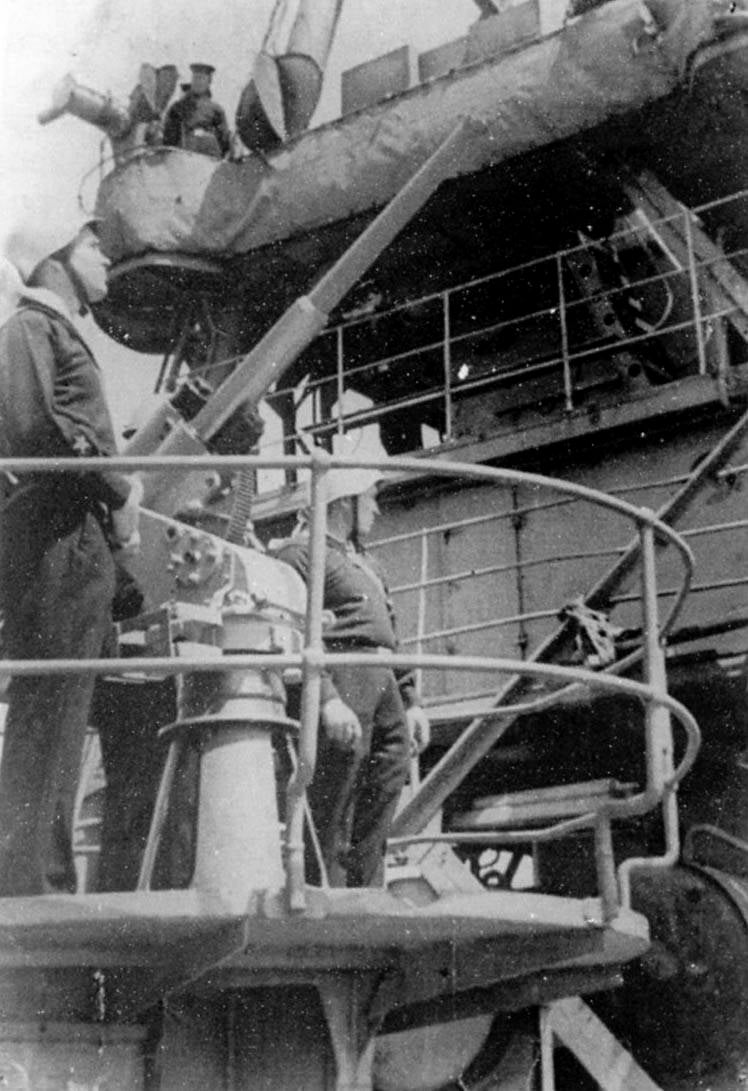
January 28 "Red Crimea" moved from Novorossiysk to Tuapse for the production of 10-day repair. Having completed the repairs, the February cruiser 11 moved from Tuapse to Novorossiysk.
13 February having taken on board the 1075 man marching mouth, 35 man of the headquarters of the Black Sea Fleet and 35 t cargo cruiser in 16.20 left Novorossiysk and in 10.50 February 14 arrived in Sevastopol, stood at the refrigerator and disembarked.
22 February, at anchor in the Sevastopol Bay, the “Red Crimea” fired a starboard at enemy troops in the Shuli area, fired 20 rounds. 24 February in 11.40 sounded the air alarm in the city. From Evpatoria at the height of 3000 m seven Ju-88 were found, which went to the cruiser. The air defense of the base late opened fire, so the planes, without breaking down, went to the ship from the bow until the bombs were dropped. The anti-aircraft artillery of the cruiser opened fire on time, but since the enemy attacked from the nose, the number of its barrels was limited. All seven aircraft alternately swooped into the ship, and each dropped two 500 kg bombs. Three fell on the left side at a distance of 20 m, 11 - on the starboard side at a distance of 10 m and more. The ship was flooded with mud and clouded with smoke and dust. It became impossible to shoot, because nothing was visible, but the attacks of the aircraft stopped. The ship received no damage, one anti-aircraft gunner was wounded. The 29 100-mm and 176 45-mm shells were spent on repelling the raid.
In 19.27, the “Shahumyan” cruiser with the destroyer left Sevastopol and in February 25 arrived in Tuapse at 12.30. A company of marines was loaded onto the cruiser - 250 man and 25 tons of cargo, and on the same day he delivered her to Novorossiysk.
February 26 3.00 cruiser approached the import pier and in the morning began accepting the 674 artillery anti-tank regiment - 500 soldiers and commanders, 20 76-mm cannons, 3 kitchen, 20 t ammunition. In 15.15 with the destroyer "Shahumyan" left Novorossiysk and in 4.00 27 in February arrived in Sevastopol, the cruiser moored to the pier Sukharnoy gully.
28 February from 5.30 to 5.55, at anchor, "Red Crimea" made 60 shots to suppress two batteries in 2 km west of Yukhara - Karalez. In 18.40, a cruiser with the destroyers “Shaumyan” and “Zheleznyakov” departed from Sevastopol to the region of Alushta for fire support of a demonstrative landing force. Prior to 19.10, ships covered two I-153 fighters. In 22.50, a message was received from the commander of the 1 th DTSch - due to the waves and wind, landing is impossible. Northeastern wind 5 points, wave - 3 points.
February 29 in 1.34 in the area Kuchuk-Uzen cruiser was fired from the coast from a distance 10 kbt anti-aircraft guns and ruzhe-machine-gun fire. In 1.45, he opened fire on the shore to suppress firing points in the Kucuk-Uzen area. Then he maneuvered off the coast at small turns or stopped the turn. The 2.47 opened fire on the coastline and Alushta from a distance of 29 KBT. Opponent responded, but to no avail. Minesweepers and patrol boats have not been able to land the landing. In 4.39, the cruiser and the destroyers lay down on a retreat to the day maneuvering area, developing 20 ties. In the afternoon of March 1, the ships maneuvered at the 9 hub in the fog. A message from the fleet commander came to 14.20: “I am waiting for instructions from the front about setting a target for firing a ship.” The cruiser was maneuvering in the area from where it could arrive for the shelling of Yalta, Alushta, Sudak, Theodosia, and with darkness break away from the coast. 18.00 received orders from the fleet to go to Poti. On March 2 the ships came to Poti in 13.00, but by this time the wind increased to 9 points, the wave - 7, so they went to Batumi and in 16.20 the ship anchored on the Batumi roadstead. 3 March he moved to Poti.
9 March, taking 180 tons of shells and mines, in 18.30 "Red Crimea" in the protection of the destroyer "Free" went from Poti to Sevastopol. When turning on the Inkerman target, they found right on the nose the submarine that was going through the course, only thanks to the measures taken, the collision was prevented. In 1.30 11 in March, the ships arrived in Sevastopol, in 4.00 the cruiser moored at the 1 of the unloading dock and began unloading. In 20.00, in escorting the Shaumyan destroyer, the cruiser left Sevastopol, having on board the 246 wounded and four bodies of 305-mm guns for the battleship Paris Commune. For loading and placing guns (total weight of 208 t), special keel blocks and bindings were made by the cruiser personnel. On March 12, the ships arrived in Poti at 19.45, and the next day the barrels were unloaded.
15 and 16 March 165 tons of ammunition were loaded onto the ship, 20 tons of food and special parts of barrage balloons: 150 balloons (22,5 tons) and 293 fighter and commander.
The 16 of March at 17.40, the cruiser with the destroyer "Deserts", sailed from Poti to Sevastopol, escorting the tankers Sergo and Leader. 18 March convoy 11 once attacked bombers and 1 torpedo bombers once. The ships fired intensive anti-aircraft fire. In total, 50 bombs were dropped on ships and transports, but none of them hit the target. Four bombs fell in the 20 m from the starboard cruiser, but did not cause damage. When repelling attacks, cruiser anti-aircraft gunners fired 116 100-mm and 196 45-mm shells.
19 March in 1.30 arrived in Sevastopol, at the entrance to the base for divergence from the submarine gave the most complete back and left handlebars. Four barrels of 305-mm guns were loaded onto the cruiser. In 20.30 with the destroyer “Deserter”, the cruiser left Sevastopol in Poti, where it arrived in 18.30 on March 20.
March 24 cruiser, accompanied by the destroyer "Unmarketer" moved from Poti to Batumi, where 25-th stood for repairs.
23 April “Red Crimea”, having taken 105 t of ammunition at 18.35 in guarding the destroyers “Boky” and “Zheleznyakov”, left Poti for Novorossiysk, where 24 arrived at 6.45 on April and moored at the Elevator pier and began unloading ammunition. During the day, three raids were carried out in groups of two Ju-88 aircraft. Each time a heavy fire opened, the planes dropped bombs outside the city and left. The cruiser used up 15 100-mm and 25 45-mm shells. On the same day, taking 1750 man marching mouth "Red Crimea", accompanied by destroyers "Boyky" and "Vigilant" in 19.15 went to Sevastopol.
26 On April, the 11.40 cruiser arrived in Sevastopol, at the entrance to the bay it was fired by enemy artillery, the shells lay in the 40-60 m from the side. The ship docked at Sukharnaya Beam and landed the fighters. Having taken the cavalry unit, the 45 wounded, as well as the staff of the headquarters, the 20.42 cruiser with the destroyers “Boky”, “The Vigilant” and “Soobrazitelny” left Sevastopol for Novorossiysk. 27 April 12.05 arrived in Novorossiysk, moored at the Elevator wharf, unloaded cavalrymen and wounded and began accepting cargo and cruising replenishment -1200 people. In 23.20 with the destroyers "Vigilant" and "Smart" went to Sevastopol. 29 on April in 3.40 ships arrived in Sevastopol, delivering 1780 people marching replenishment, 25 tons of ammunition, 16 torpedoes and 265 depth charges. The cruiser moored at Sukharnaya Beam, unloaded cargo and resupply and received 44 injured, 67 commanders and 35 members of the commanding families. In 21.25, the “Red Crimea” with the leader “Tashkent”, the destroyers “Vigilant” and “Sorazitelny” left Sevastopol and exactly a day later arrived in Batumi.
Over the 22.6.41 over the 1.5.42 period, 1336 100-mm and 2288 45-mm shells were used up by repelling aviation attacks.
The 6 of May "Red Crimea" in the security of three torpedo boats, one patrol boat and two I-153 aircraft cruiser moved from Batumi to Poti.
On May 8, the enemy launched an offensive against Sevastopol. The commander-in-chief of the North Caucasus Direction ordered the fleet commander: “... after the loading with two destroyers, the Red Cruiser“ Krasny Krym ”, no later than 10, could leave Novorossiysk to Sevastopol ...”. The 11 of May in the 16.25 cruiser with the destroyers Dzerzhinsky and the Independent went out of Poti and the 12 of May in 7.05 ships arrived in Novorossiysk. Having accepted the replenishment for the Maritime Army, they went to Sevastopol in 20.00. On May 13, in the fog, the ships approached the entry point of fairway # 3 and in 24.00 they stopped the cars to improve visibility.
Former comflot in his diary recorded: “14 May. A hard day today, such heavy information, but there was still fog, it was all day, only by 18 h. KR “KR” managed to enter the base with 2000 march, ammunition, products. At the entrance the cruiser was heavily bombarded with artillery fire ... ".
14 in May in 19.50 "Red Crimea" and "Independent" entered the main base, delivering 2126 soldiers and commanders and 80 tons of ammunition. ("Dzerzhinsky" in 11.32 was sent to search for a minesweeper who met the squad, but because of an error in numbering, it hit a defensive minefield, hit a mine in 12.27 and died.) Due to fog, the cruiser, like other ships arrived in Sevastopol , could not until May 19 out of the bay.
The 19-20 of May, the cruiser, having taken the 473 wounded with the destroyer "Proxy", moved from Sevastopol to Tuapse, and then to Poti.
May 26 ship moved from Poti to Batumi.
1 June "Red Crimea" with the destroyers "Savvychny" and "Svobodny" arrived in Novorossiysk. On June 2, having received marching companies, weapons, ammunition and food, the ships in 19.18 left Novorossiysk and on June 3 in 23.24 arrived in Sevastopol. FS Oktyabrsky wrote in his diary: "It is wonderful: the cruiser" Red Crimea "arrived in the GB near 00 h ...". On June 4, taking on the 275 wounded and the 1998 evacuated to 2.00, the ships left Sevastopol and arrived in Tuapse on 6.25 on June 5 and then went to Poti, and June 6 went to Batumi.
In 1942, the “Red Crimea” was more often involved in the transportation of military replenishments and cargoes to the blocked Sevastopol more often than other ships of the squadron - from February to May it broke through seven times into the Main Base.
18 June 1942. By order of the People's Commissar of the Navy No. 137, the cruiser Krasny Krym was awarded the Guards rank.
The 20 June cruiser arrived in Poti, and the next day in 19.25 left Poti and in 5.10 22 June arrived in Tuapse, for another trip to Sevastopol. However, the command of the fleet has already become clear that the cruisers will not be able to break into the besieged city.
25-26 June ship moved from Tuapse to Batumi.
15 July 1942. The "Red Crimea" became part of the newly formed cruiser brigade.
On July 26, on Navy Day, Rear Admiral N.Ye. Bassisty handed the ship a flag of guards. The flag was received by captain 1 of the rank of AI Zubkov.
At the end of July 1942, the German troops launched an offensive in the North Caucasus. There was a threat of a breakthrough of the 17 of the German army to the Black Sea near Novorossiysk. The evacuation of the city began.
5 in August “Red Crimea” escaped the battles “The Cleaver” in 17.10 and left Batumi. In August, 6 arrived in Novorossiysk to evacuate the families of the commanders, party and Soviet workers and values. On the same day, after accepting a 6.42 man, he left for 2600 in Batumi, where 19.35 arrived in August at 7.
August 8 cruiser in 13.50 with the destroyer "Deserts" again out of Batumi in Novorossiysk. August 9 arrived at Novorossiysk in 5.05 and, accepting the evacuees and valuable cargo, delivered them to Batumi.
12 August in 21.05 with the destroyer "Independent" and three SKA cruiser arrived from Batumi in Novorossiysk. On August 13 in 0.15 the ships left Novorossiysk in Tuapse with units of the 32 Guards Rifle Division. In 4.45 they arrived in Tuapse, and after unloading they left for Poti.
16 August "Red Crimea" with the destroyer "Unmarketer" moved to Batumi - Novorossiysk. On August 17, a cruiser delivered 630 troops from Novorossiysk to Batumi, 1020 evacuees, 60 tons of valuable cargo.
25 August "Red Crimea" in the protection of the destroyer "Soorazitelny" moved Batumi - Poti. During the period from August 28 to October 6, the 1942 cruiser underwent maintenance.
On October 6, having completed the repairs, the cruiser, accompanied by the destroyers "Smart" and "Boyky", moved from Poti to Batumi. October 13 "Red Crimea" went to the measured mile. October 19 in 7.00 in escorting the destroyer "Merciless" cruiser came out of Batumi to determine the radio movement, and arrived at Poti in 18.10.
In mid-October 1942, the enemy troops launched an offensive in the area of Tuapse. October 21 "Red Crimea" with the destroyers "Merciless" and "Savvyarny" delivered from Poti in Tuas 3000 fighters, 11 guns and 39 mortar 8 Guards Brigade and 350 fighters and 8 10 mortar brigade. Coming out of Poti, an enemy seaplane was found on the outer roadstead and opened fire on it.
On October 22, the ships returned to Poti, and the next day the cruiser with the “Smart” moved to Batumi - Poti.
On December 1, the “Red Crimea” moved from Poti to Batumi, and the next day, accompanied by the destroyer “The Cleaver” in Tuapse, delivering part of the 9-rd mountain rifle division. December 3 ships returned to Batumi.
The Krasny Kavkaz cruiser squadron (flag of the commander of the squadron L.Vladimirsky), Krasny Krym leader Kharkov, the Merciless and Sorazyatelny destroyers participated in the landing operation in the area of South Ozereyka. 3 February 1943 “Red Crimea” in 6.10 left Batumi and after 20 mines entered the wake of the “Red Caucasus”. The detachment lay on the course 295 °, so that, moving to the west, disorient the enemy, the speed of 18 bonds. In 18.05, the squad turned to 24 ° - in the area of operation. In 22.55, the squad formed a course leading to a combat tack. "Red Crimea" has established contact with the aircraft spotter. In 0.12 4 February, i.e. 48 minutes before the discovery of the fire, Vice Admiral Vladimirsky received a cipher telegram from the landing commander Rear Admiral Bassist with a request to postpone shooting for 1,5 hours in connection with the delay of the landing party. Cruisers and destroyers turned back to the south and maneuvered to approach the landing area.
The spotter aircraft was notified of the transfer of fire, but did not go to the base, but continued to fly until 2.09, after which it left, having spent fuel.
February 4 in 2.16 squad approached the landing area. The ships lay on the combat course, move 9 bonds. In 2.35 (after 3 mines after the flagship), "Red Crimea", having three reliable observations, opened fire on Osereyka. The fire was on the area, without adjustment. Having spent 598 130-mm and 200 100-mm shells, 3.05 ceased firing. The cruisers and the leader formed the course of their departure seaward at the rendezvous point with the destroyers. In 7.30 they were joined by "Smart" and "Merciless" and entered into security. Due to a strong storm, the detachment did not enter Batumi at night, but maneuvered off the coast of Turkey. 5 February in 10.50 "Red Crimea" arrived in Batumi and moored to the pier.
March 11 with the destroyers "Boky" and "Merciless" moved from Batumi to Poti.
April 14-15 with the destroyers "Boyky", "Merciless" and "savvy" moved from Poti to Batumi.
8 April 1944 of A.Zubkov was appointed commander of the cruiser "Murmansk" transferred to the United States on account of reparations. The commander of the "Red Crimea" becomes PA Melnikov, who previously commanded the destroyers division.
9 in May 1944 was transferred from Batumi to Poti, in escorting the destroyers Zheleznyakov, Nezamozhnik, TFR Storm, BSCT Shchit, 14 SKA, 4 of the MBR-2.
From 15 May to 17 August 1944 passed a scheduled repair in Poti. In this case, the method of incomplete docking in the 5000-ton dock was applied. The length of the bow of the ship's console was 33,6 m, trim angle of the floating dock - 3 °. The cruiser in the dock was visited by the People's Commissar of the Navy, Admiral N.G. Kuznetsov.
In November, 1944 Squadron was preparing to relocate to Sevastopol. "Red Crimea" was included in the 1 squad.
On November 4 in 9.00 the cruiser left Poti together with the battleship Sevastopol in escorting the destroyers “Zaporozhnik”, “Zheleznyakov” “The Flying”, “Light”, “Adroit” and 8 of the Bo boats, the speed of the 16 detachment. November 5 in 8.00 connected with the 2-th squad - two cruisers and three destroyers. In 8.50, the flagship “Red Crimea” has been raised to be the head one. ” Cruiser in full swing went around the battleship on the right and became the head of the squadron. In the 12.50, the nasal 100-mm installation of the cruiser made the first salute shot, and in the 12.52 it entered the base and the 13.07 stepped on the barrel.
During the Great Patriotic War, the "Red Crimea" participated in almost all the operations of the Black Sea Fleet and more than the other cruisers made campaigns. However, for all the time he did not receive a single severe damage comparable to the damage of other cruisers of both the Black Sea and Baltic fleet. Perhaps this was the result of military luck, but most likely the skill
12 January 1949, the "Red Crimea" was assigned to light cruisers, 31 May 1949, transferred to the squad of training ships of the Black Sea Fleet. 8 April 1953 was taken out of service and reclassified into a training cruiser. From June 1956 to June 1957, the cruiser housed the personnel of a special purpose expedition (EON) to lift the battleship Novorossiysk. The cruiser stood in Sevastopol Bay near the coast, against Ushakov beams on the Korabelnaya side. He was connected to the shore (via the floating tower) by the floating quay.
7 May 1957 was disarmed and reformed first in the SM, then the OS. From 11 March 1958 - PKZ. 7 July 1959 was excluded from the fleet lists due to transfer to OFI.
30 June 1970 The cruiser’s flag of the cruiser was hoisted on a large anti-submarine ship of 61 Avenue “Red Crimea”, which on October 20 1970 entered into the composition of the RFU.
Commanders: to 1 p Polushkin (2326.11.1915), to 1 p Veselago (26.11.1915 -31.10.1916), to 1 p Saltanov (31.10.1916 -?), A.A. Kuznetsov - (1929-1930 ???, I.S. Yumashev - (2.1932 -12.1933), to 2 p M.Z. Moskalenko (12.1933 -11.1935), to 2 p F.S. Markov (1935 -?), To 2 r, to 1 p A.I. Zubkov (9.1940- 16.4.1944), to 1, p. A. Melnikov (16.4.1944 - 9.5.1945).
- Alexander Chernyshev, chapters of the book "Stalin's Guards Cruisers"
- "Svetlana". History of creation
Service history "Svetlana"
Service history "Admiral Nakhimov" - "Chervona Ukraine"
Service history "Admiral Lazarev" - "Red Caucasus"
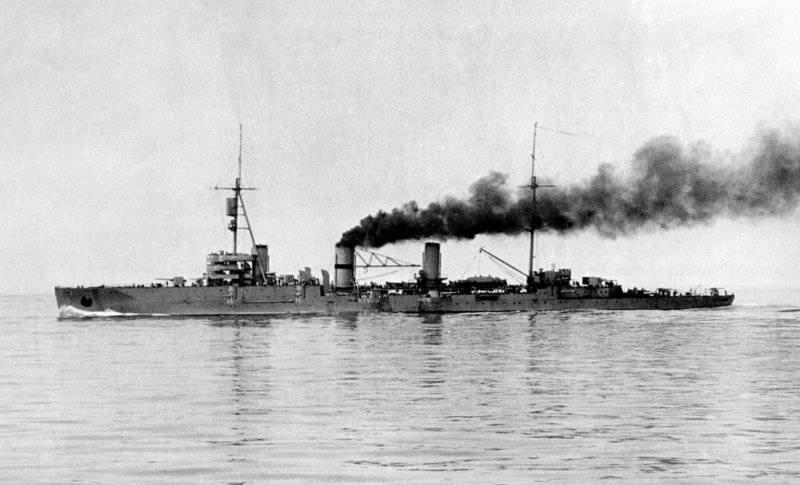
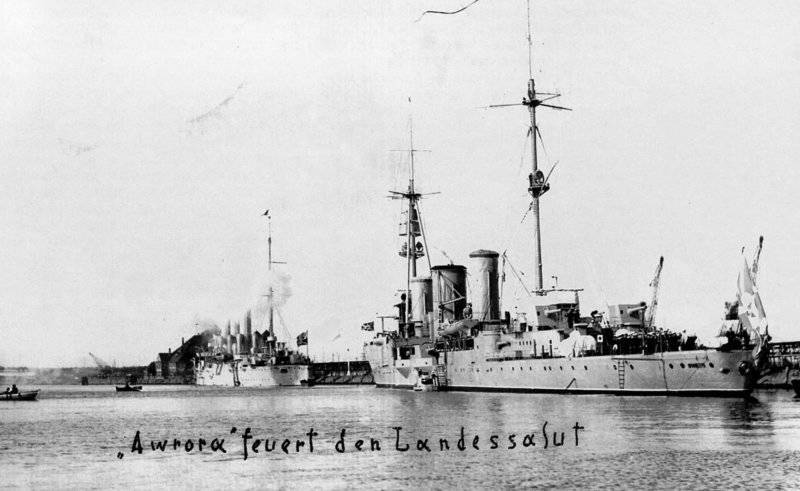
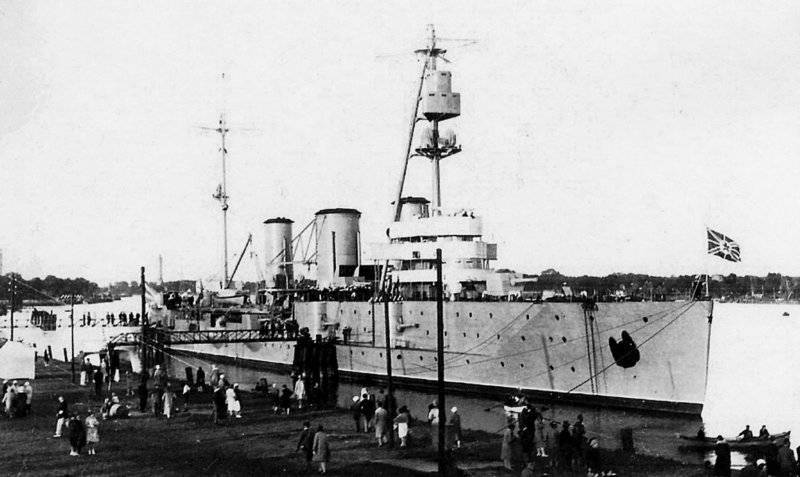
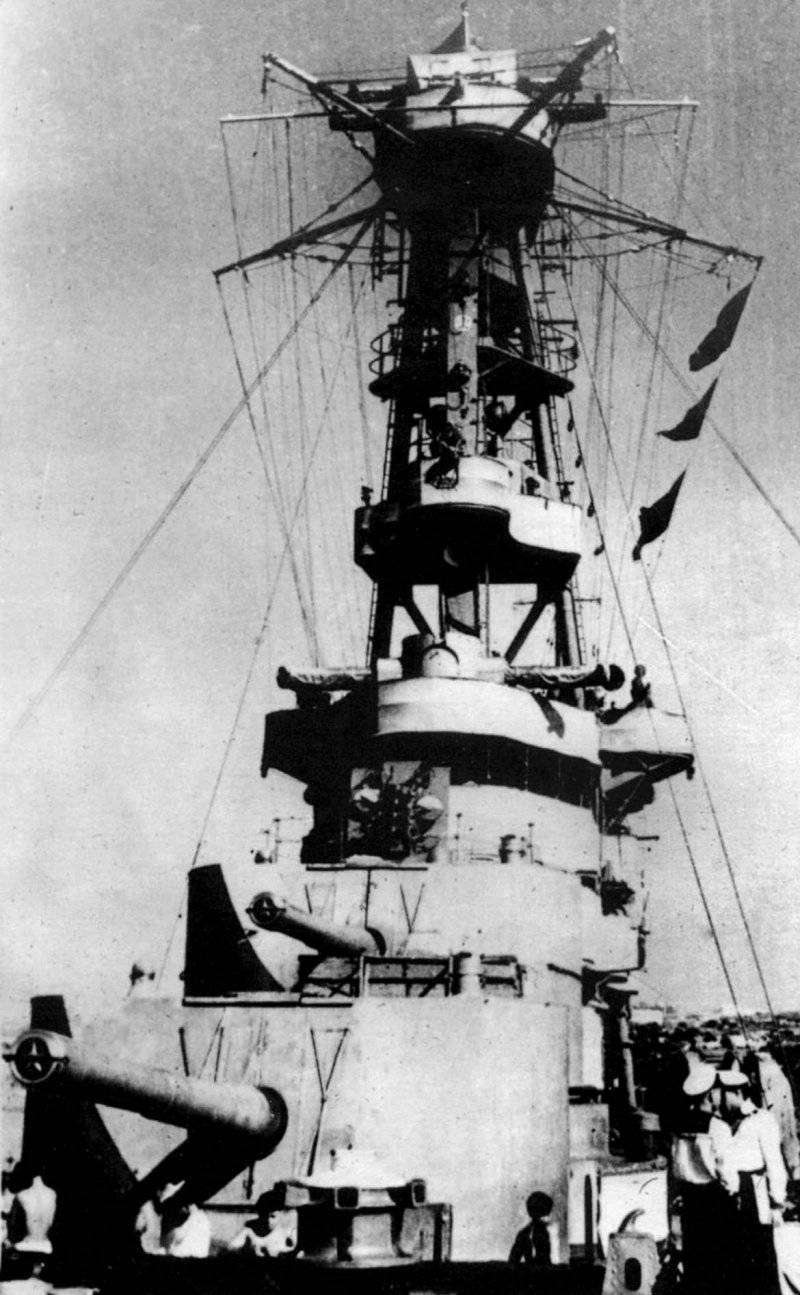

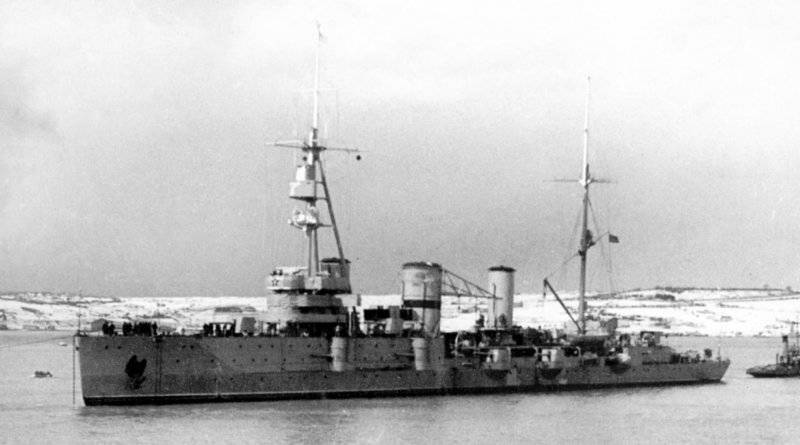
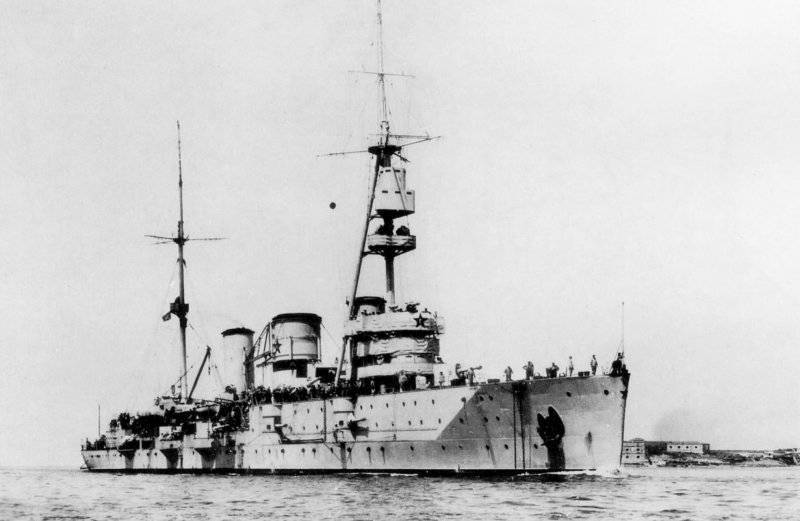
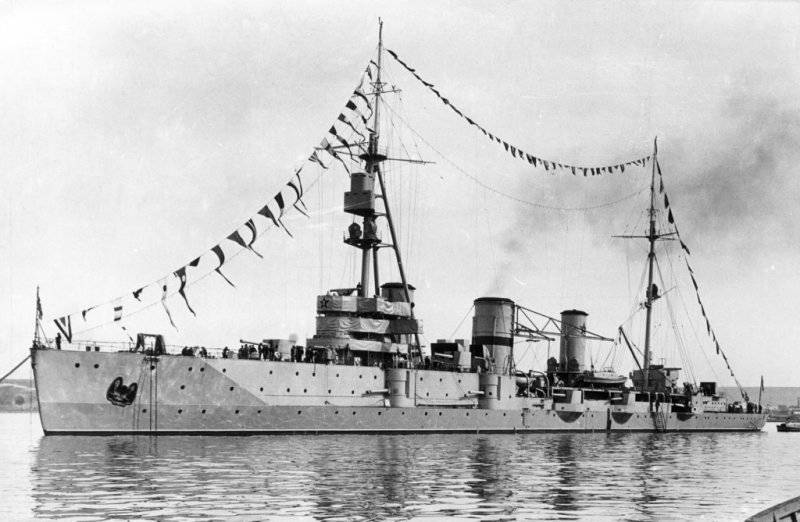
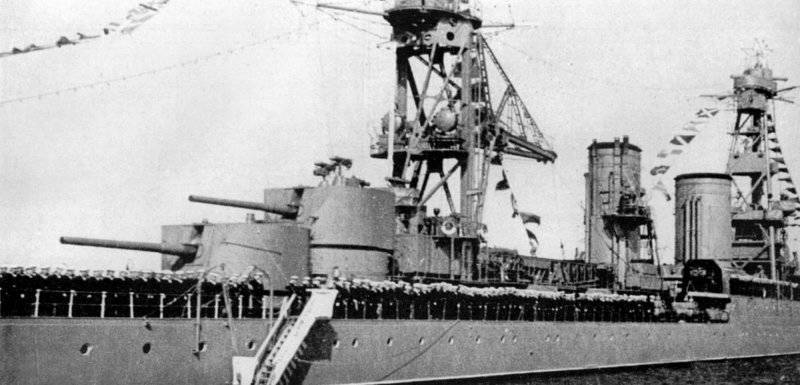
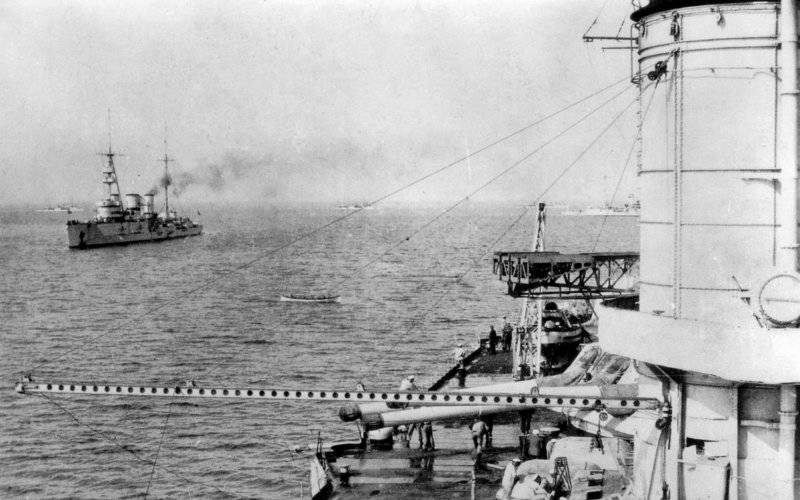
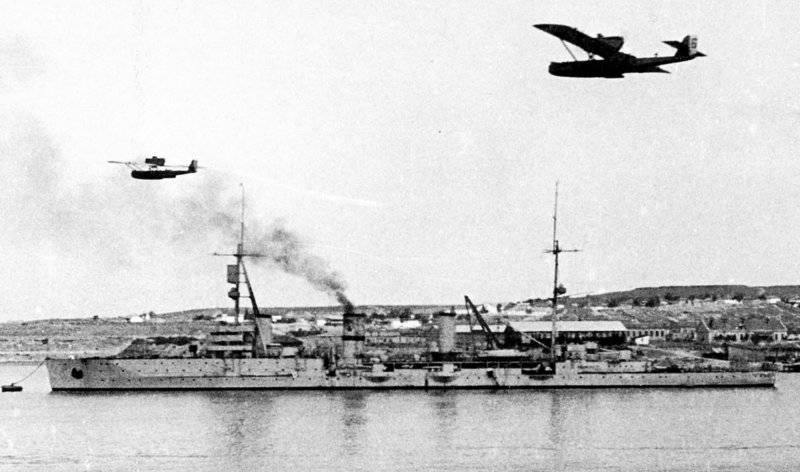
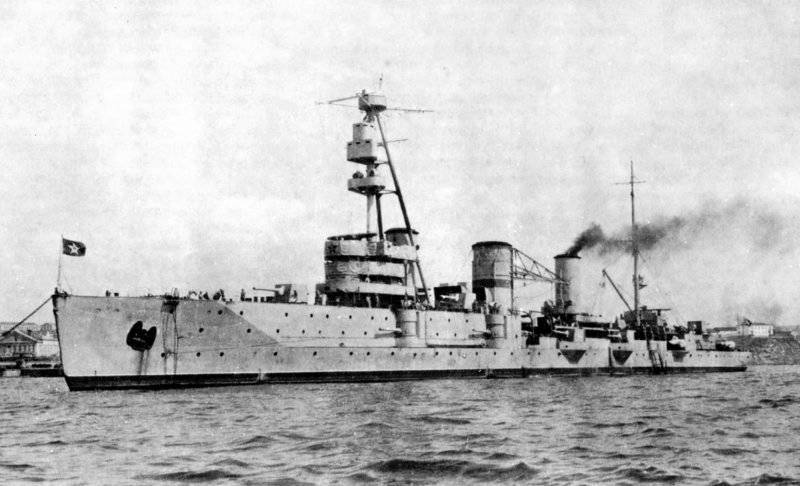

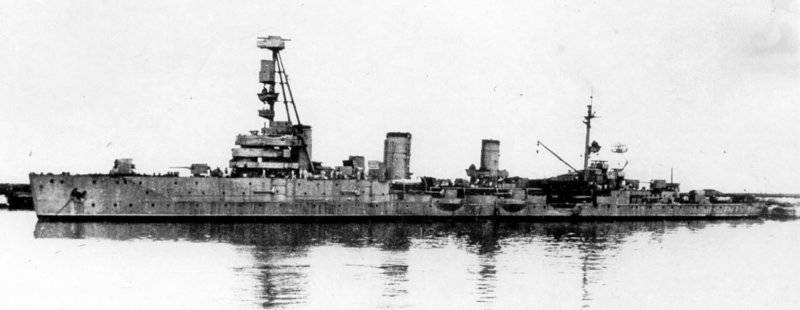
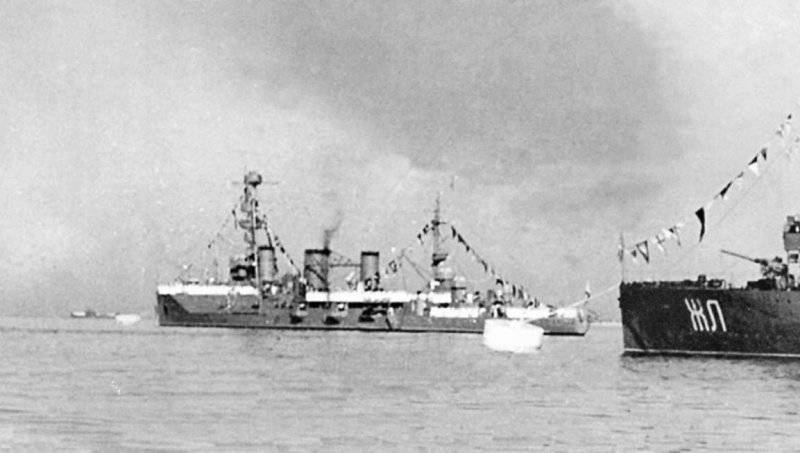
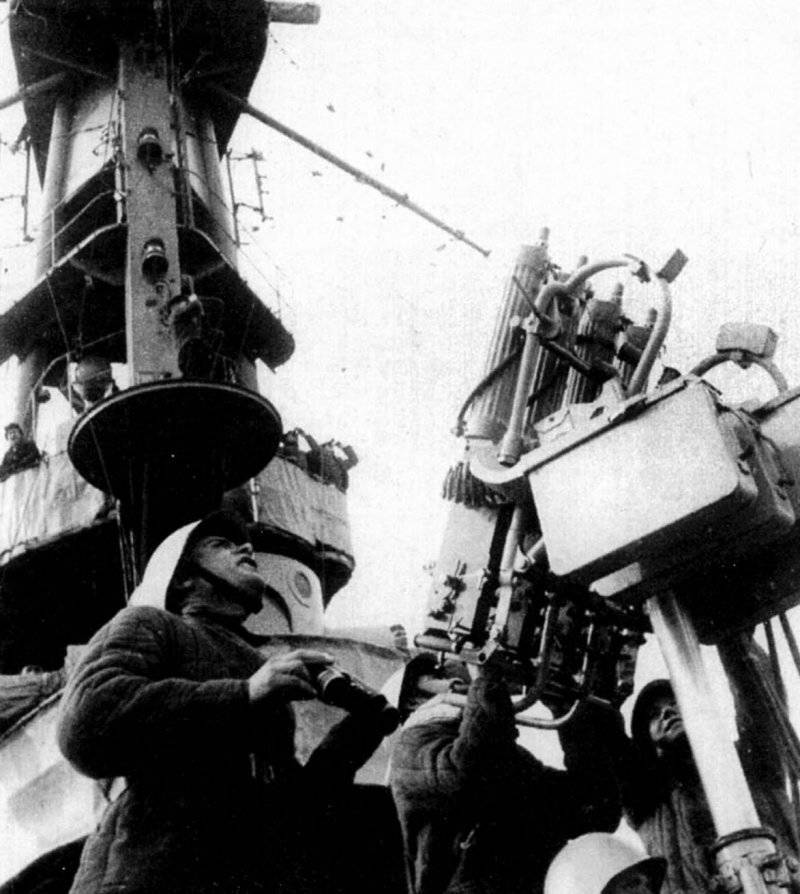
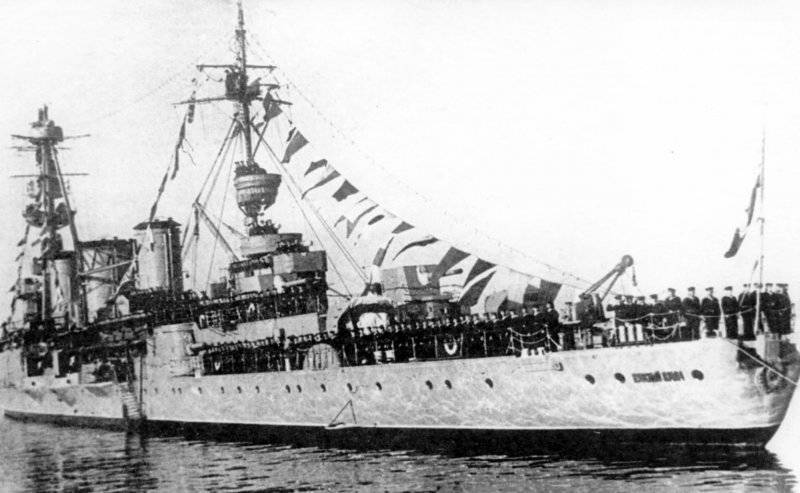
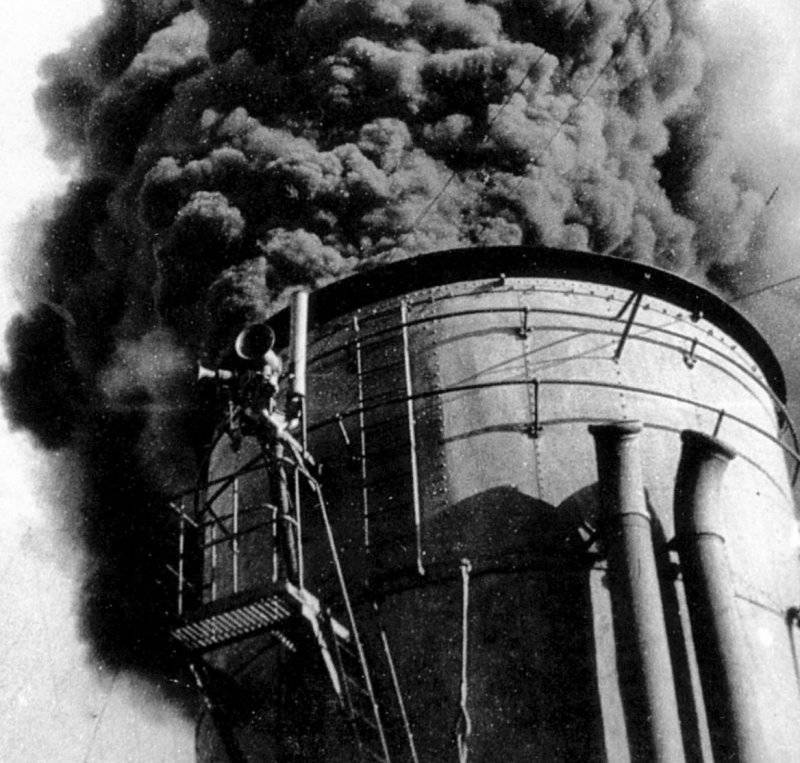
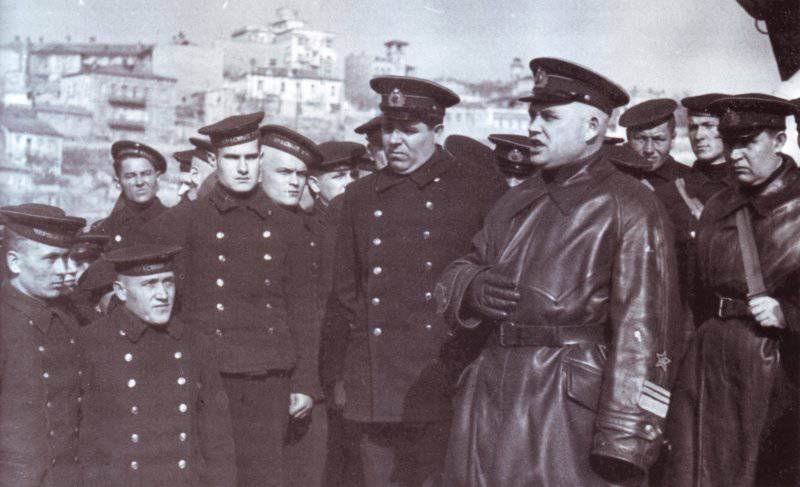
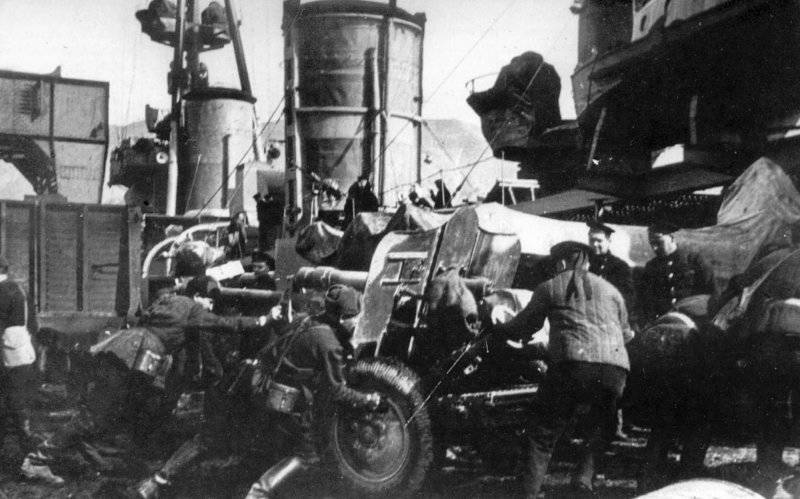

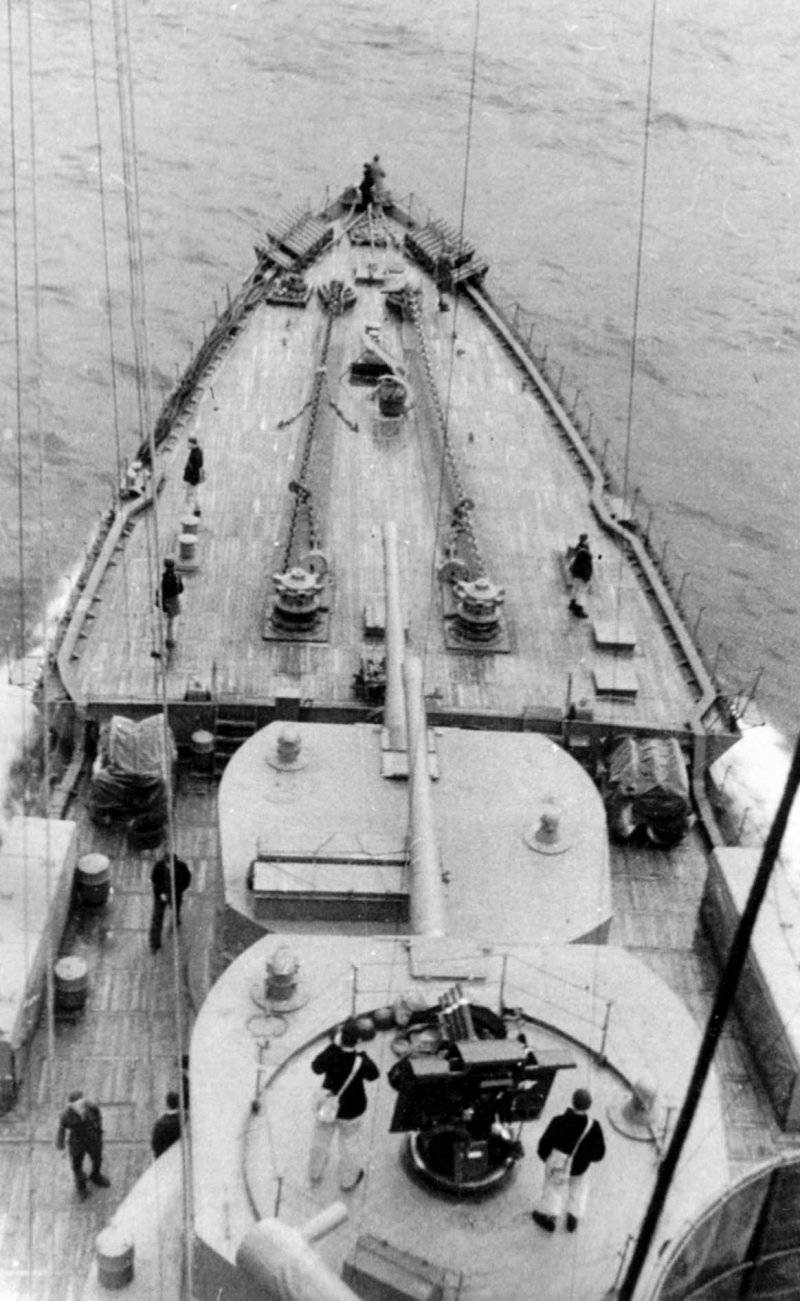
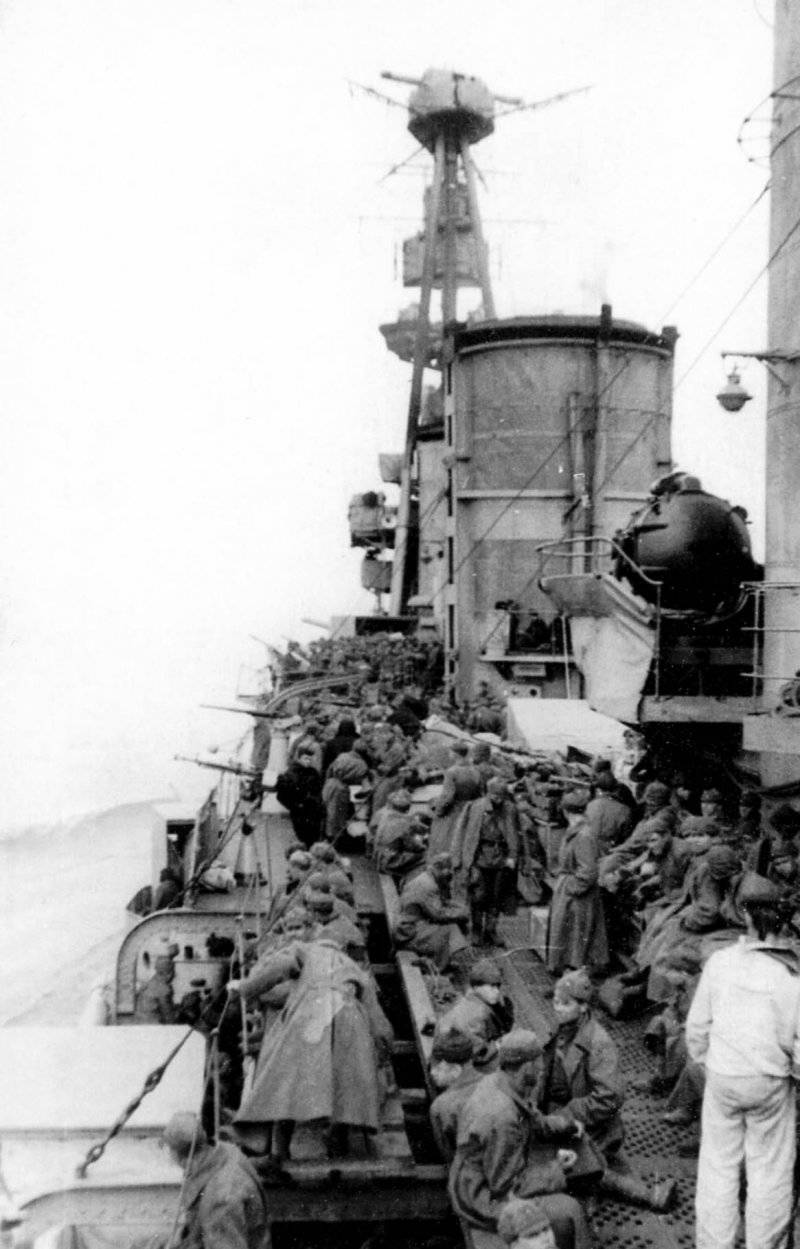
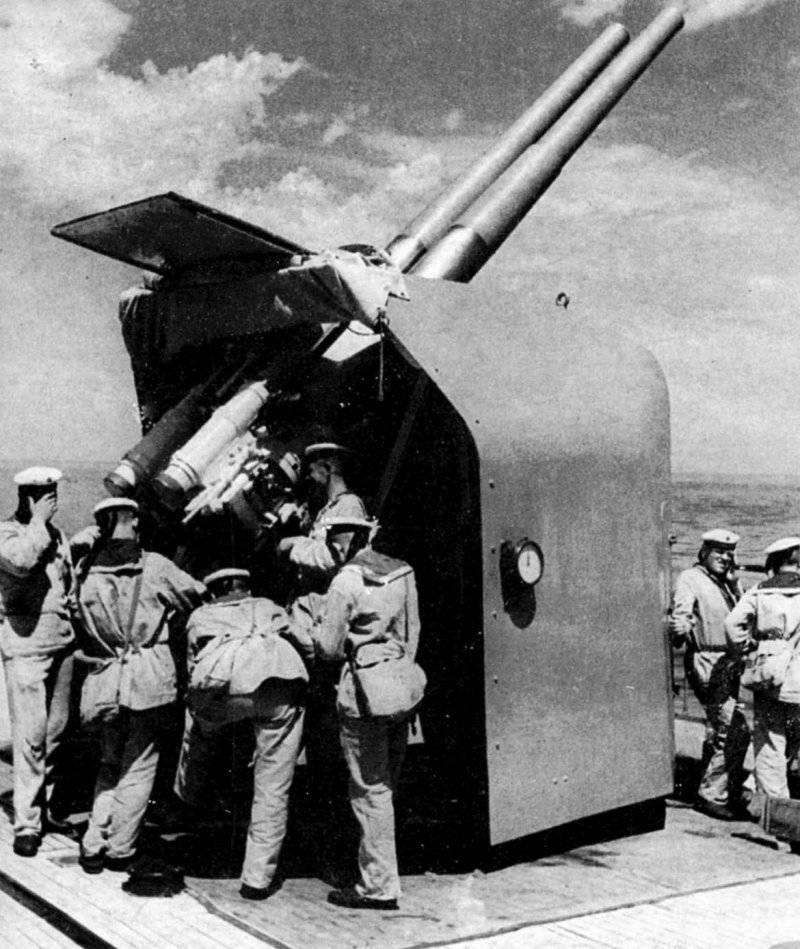
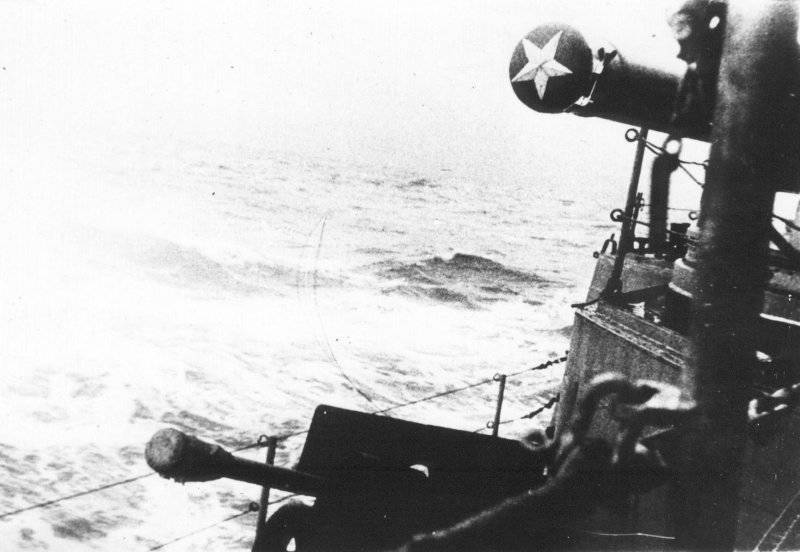
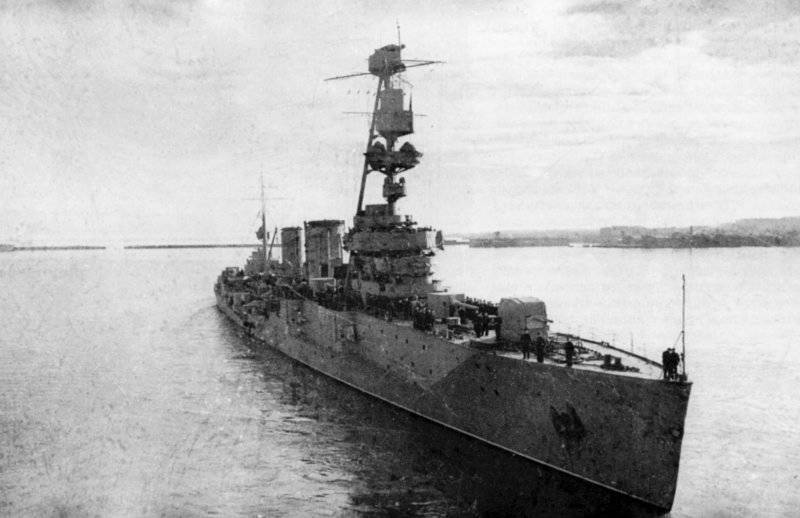
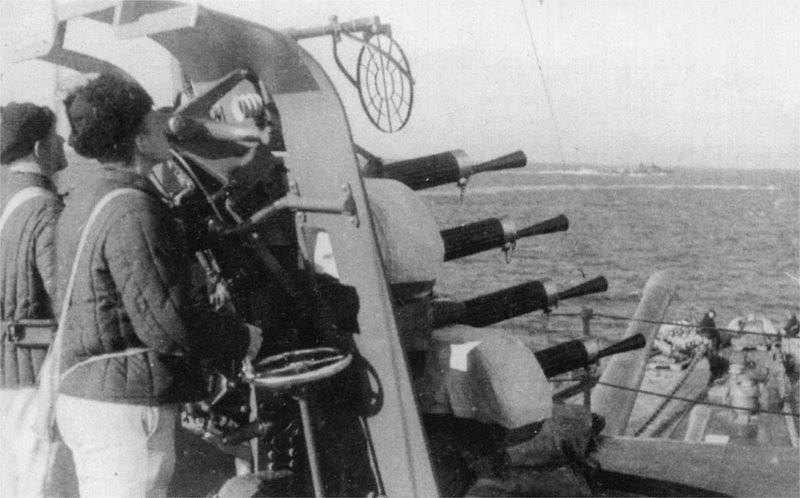
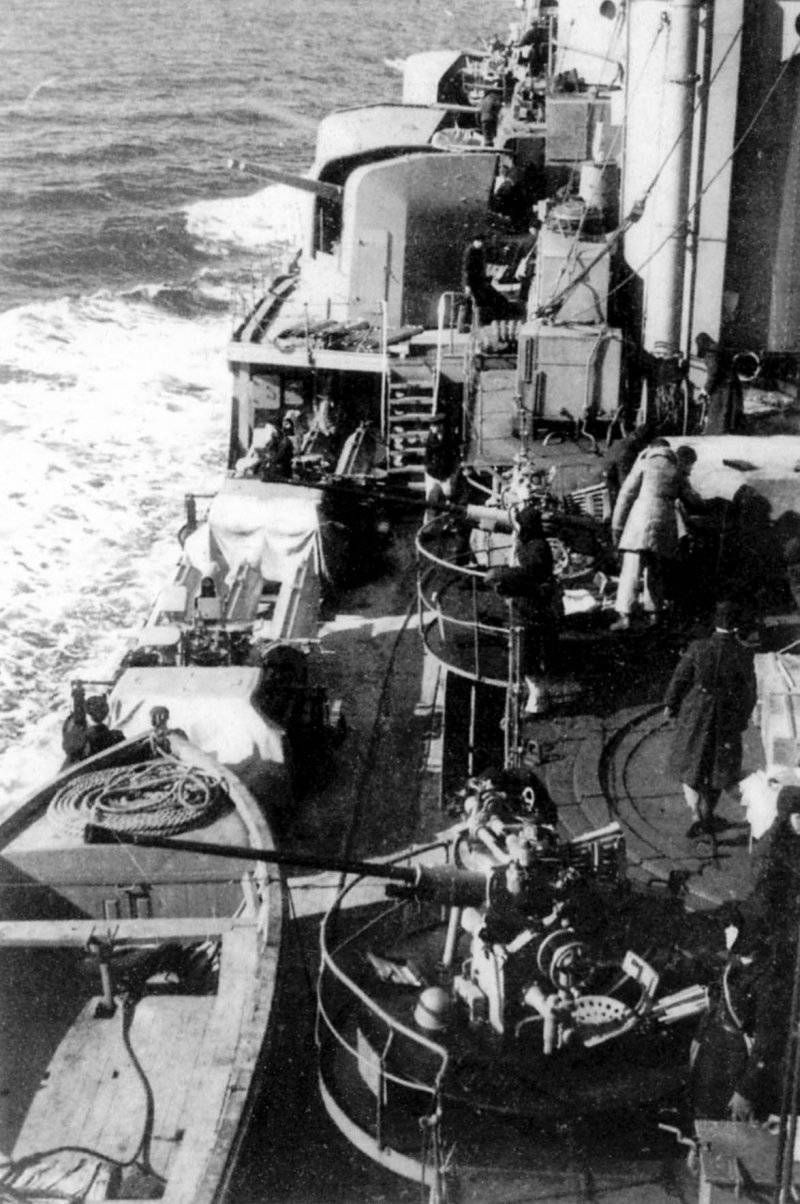
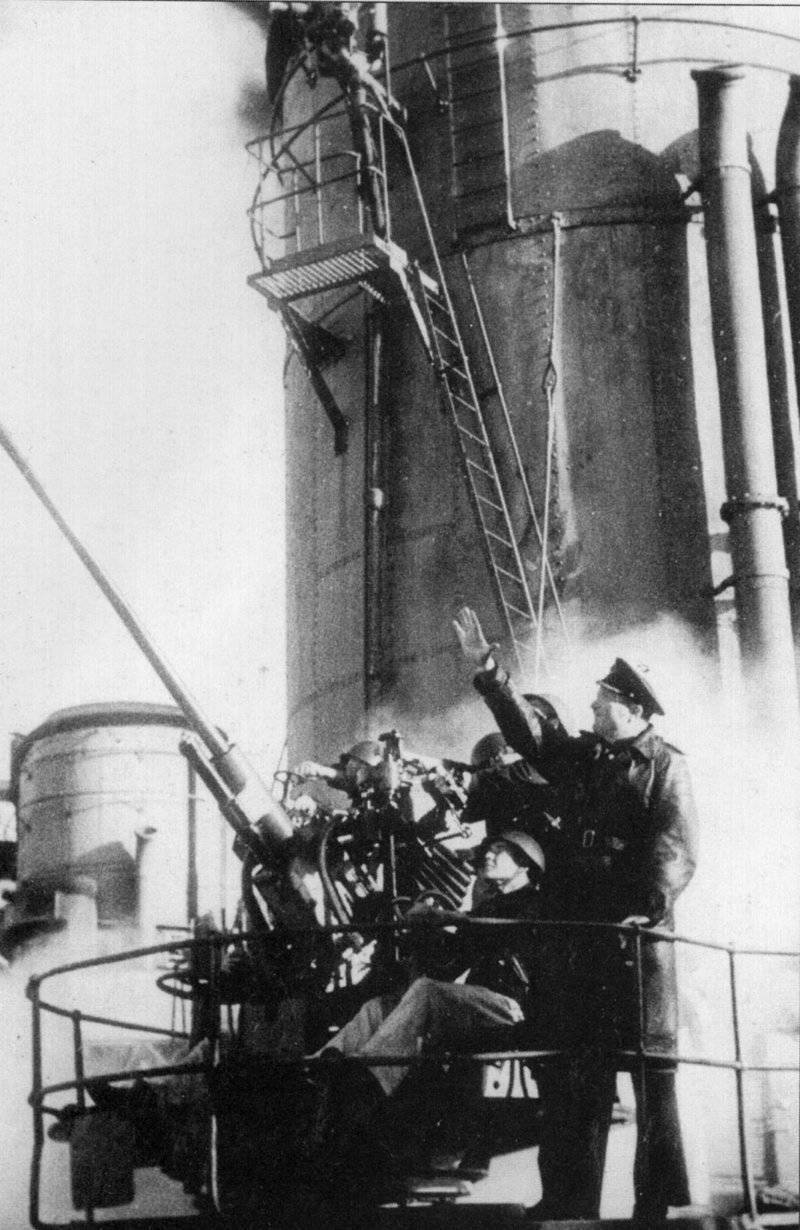
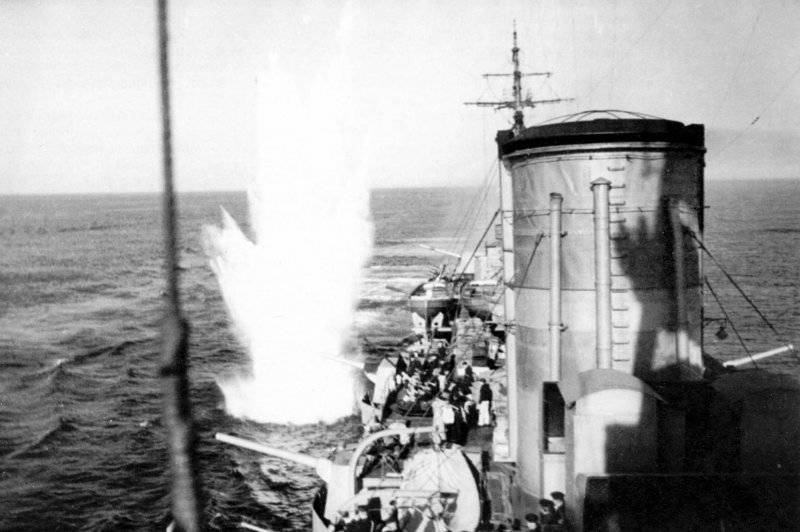
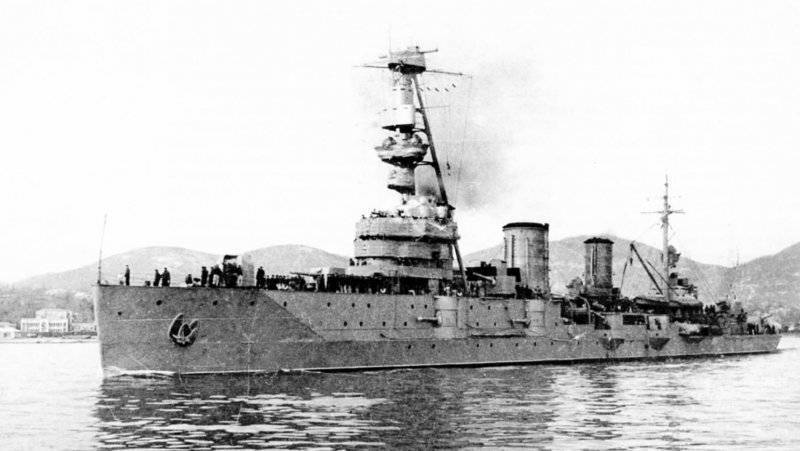
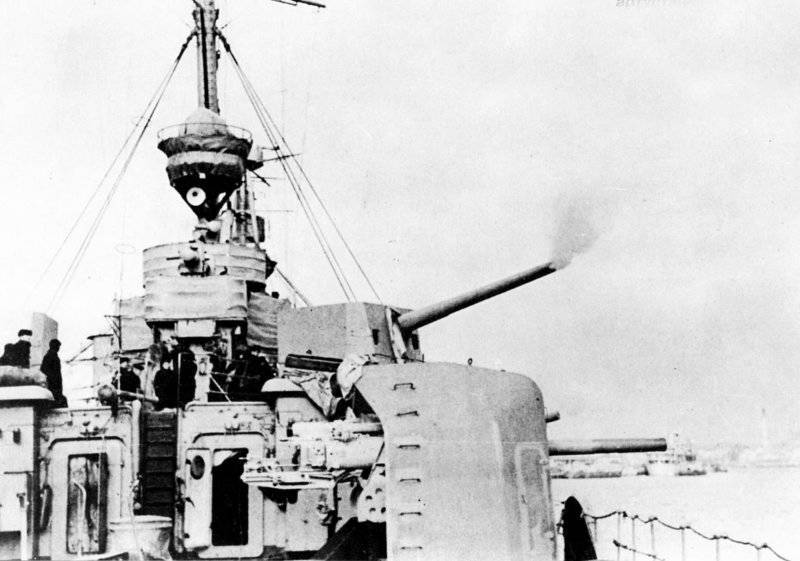
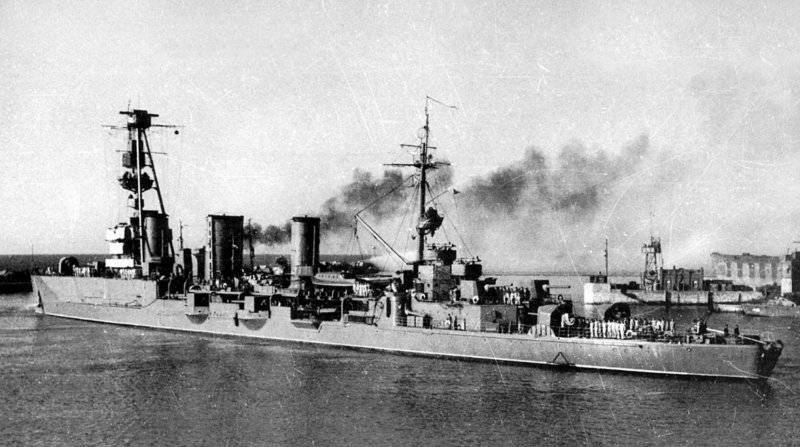
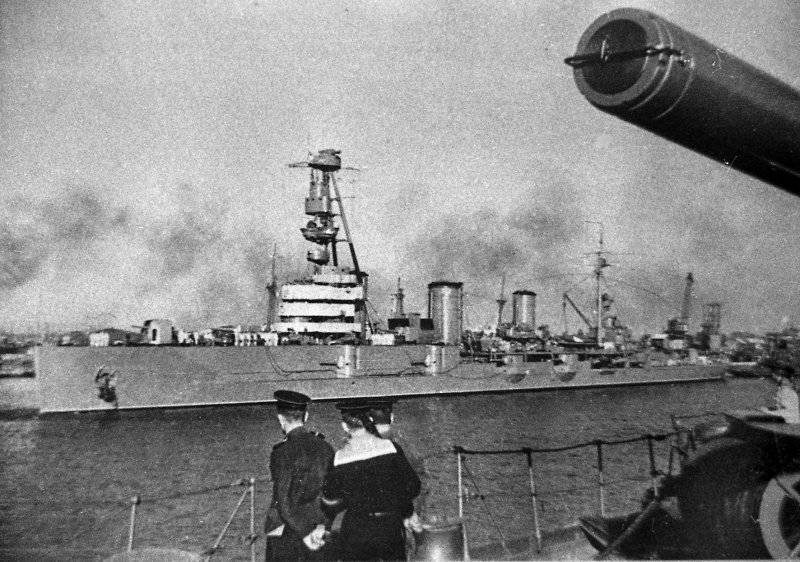

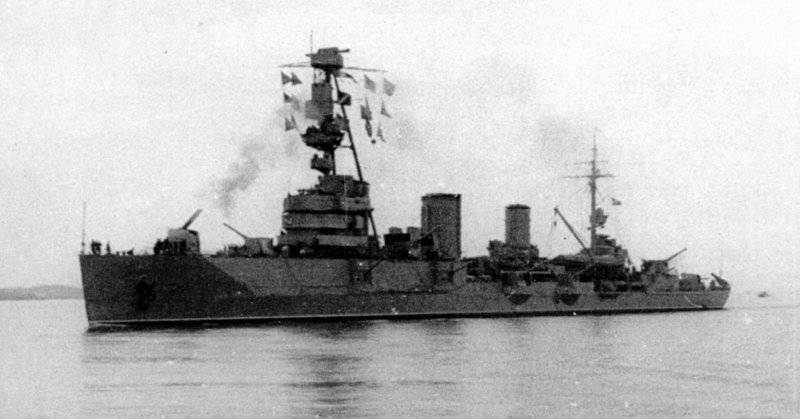
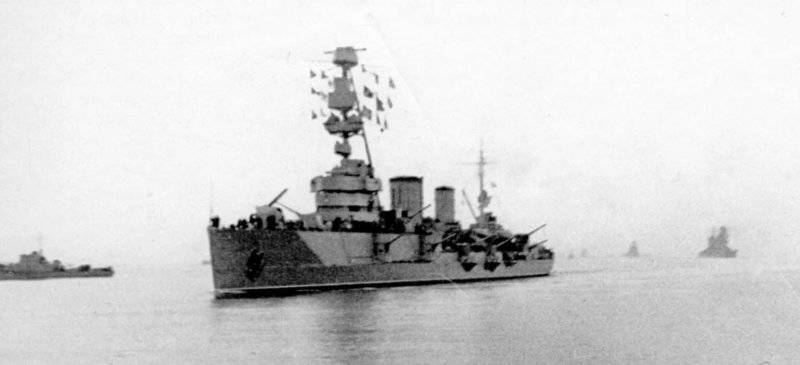
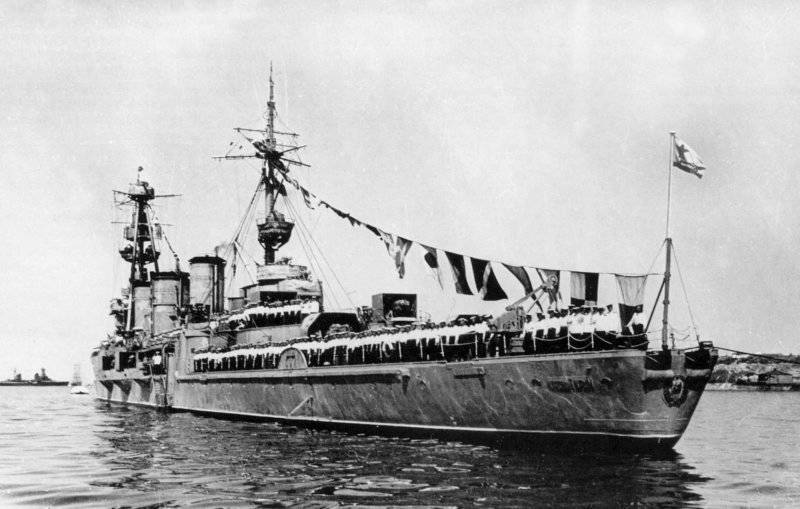
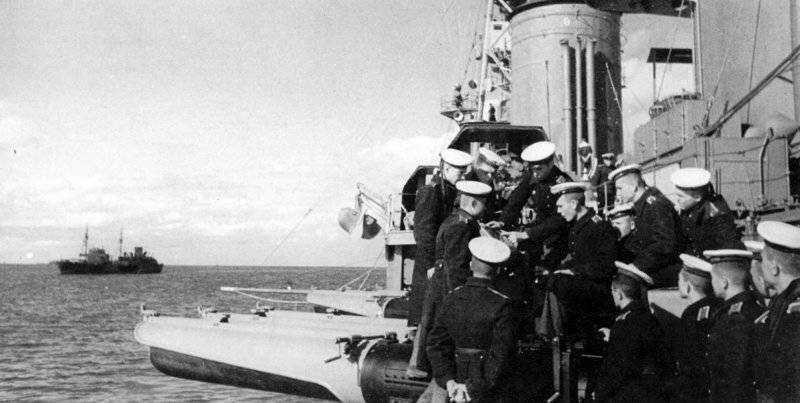
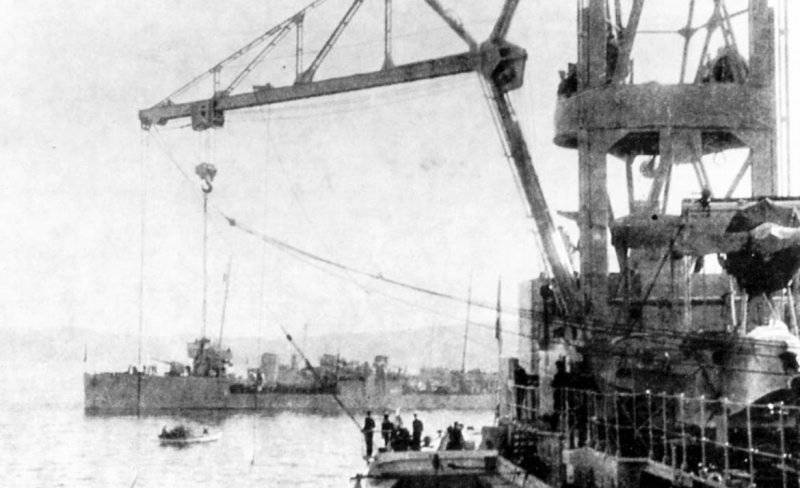
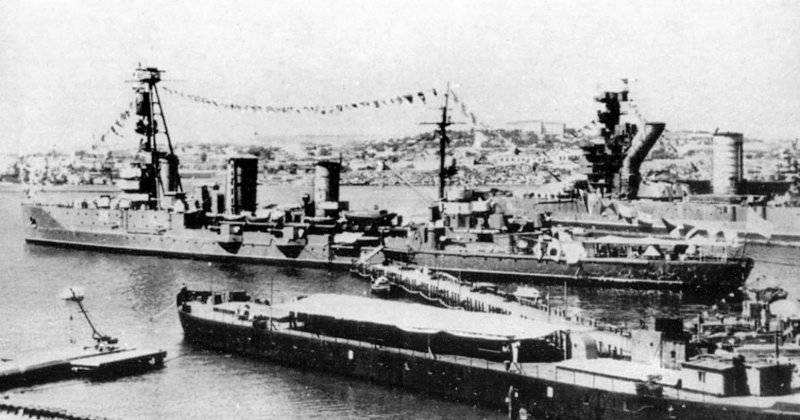
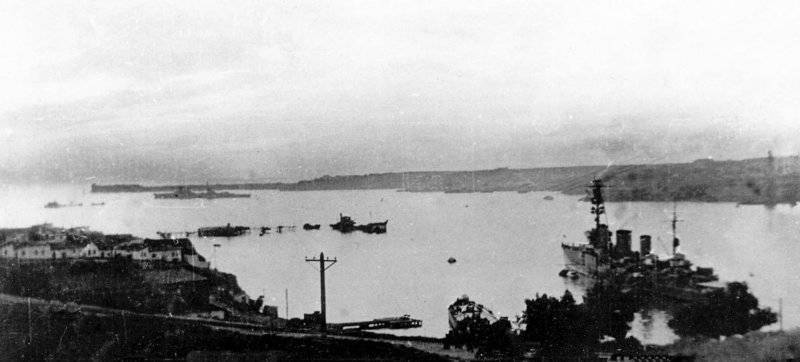
Information